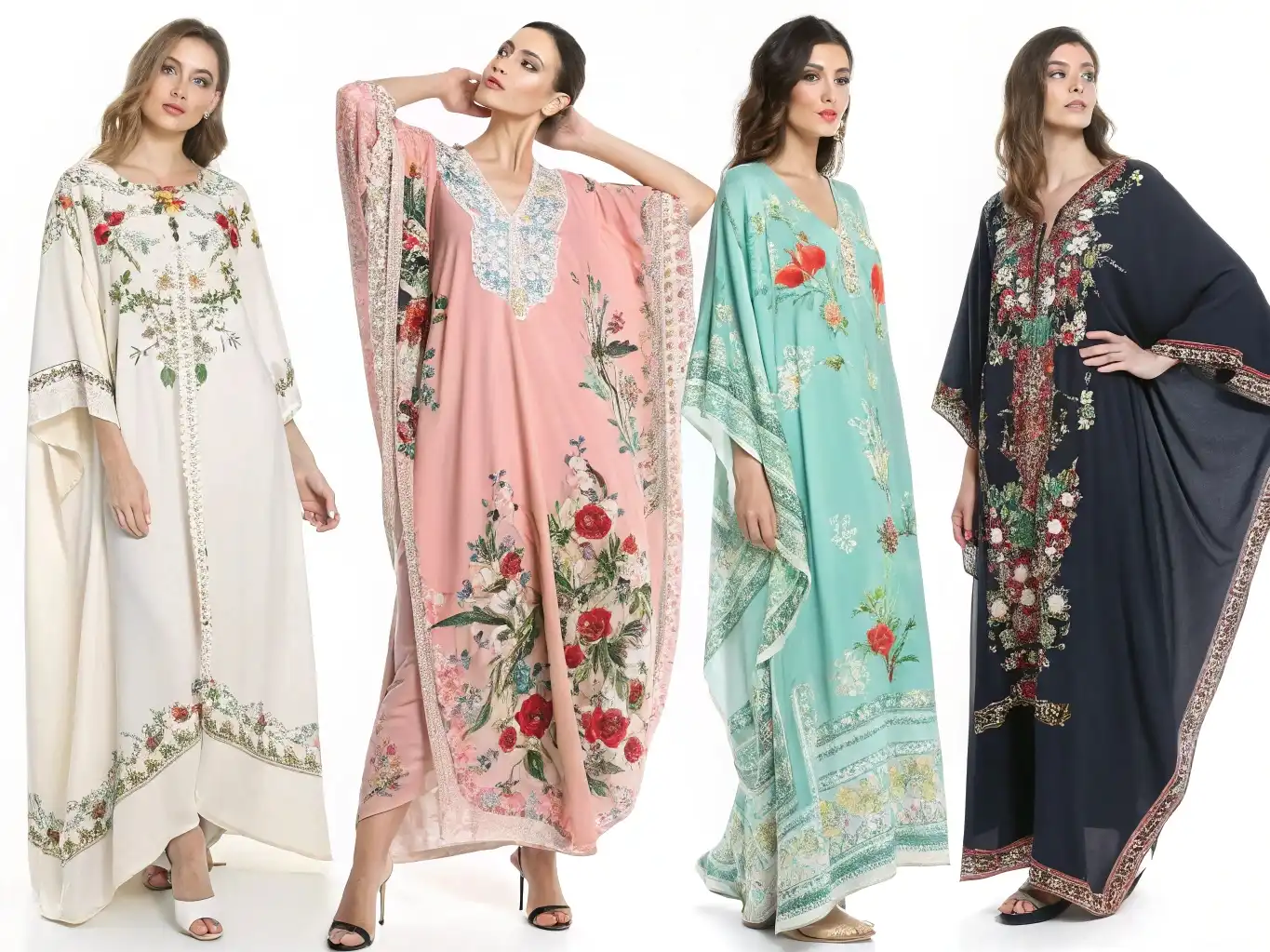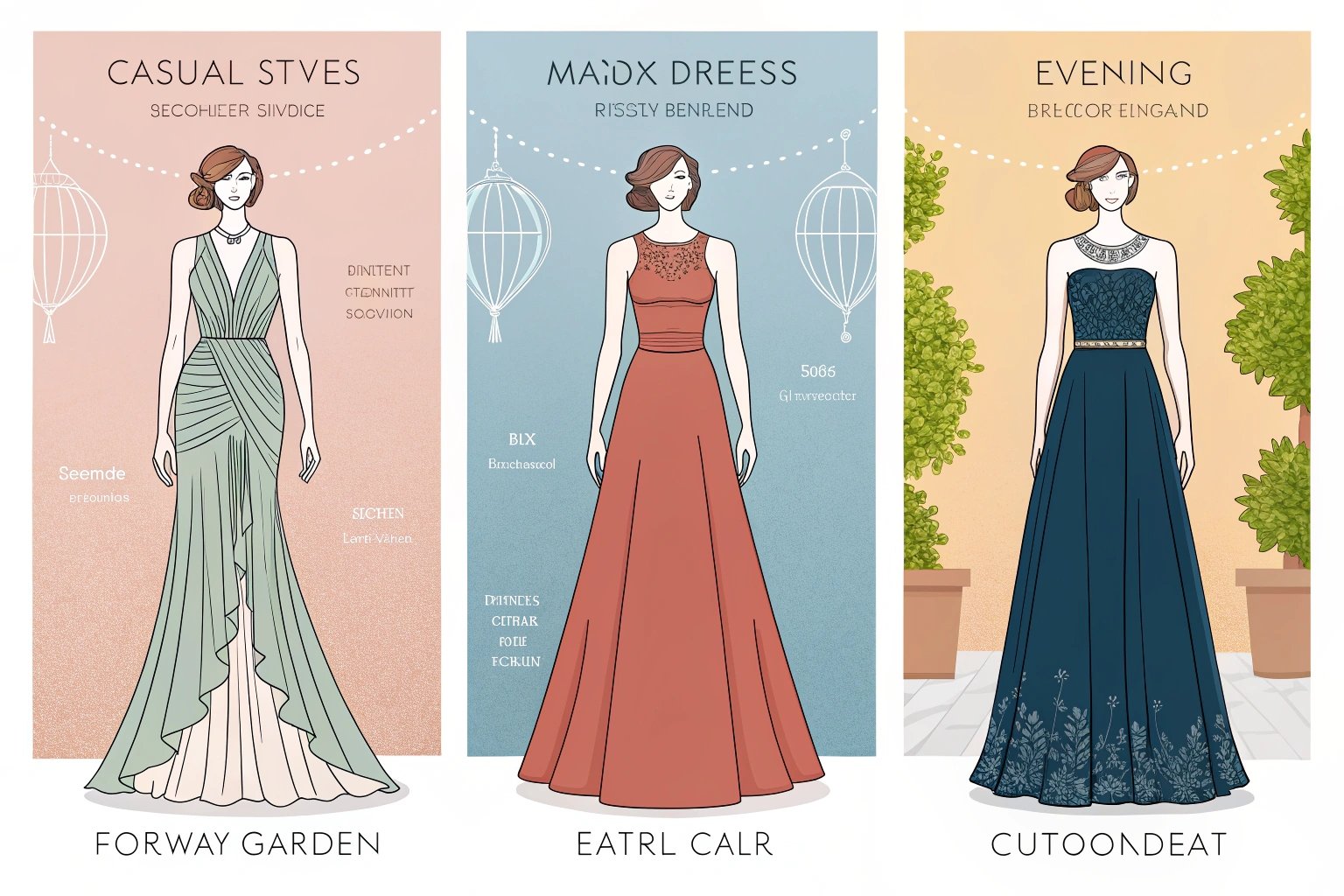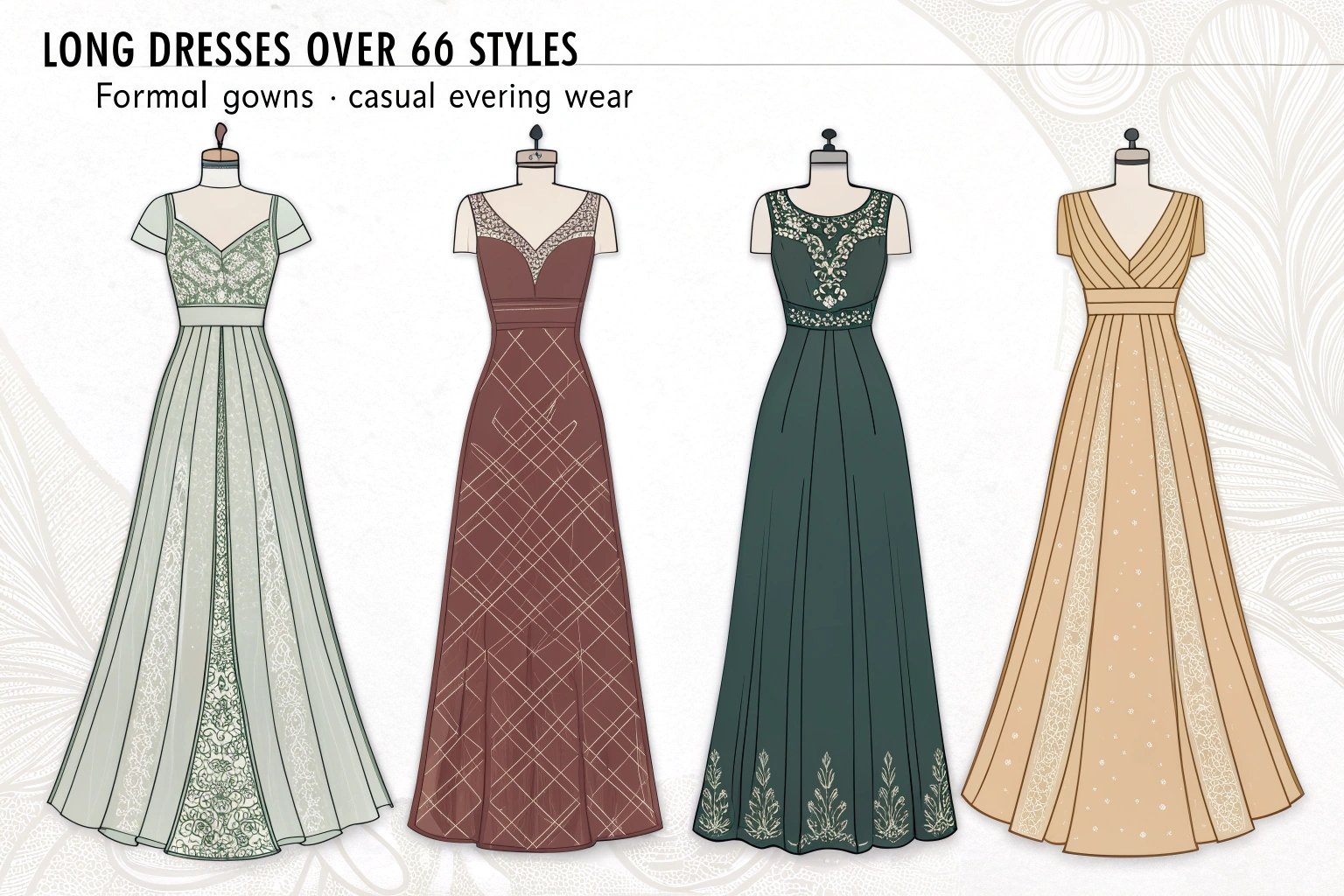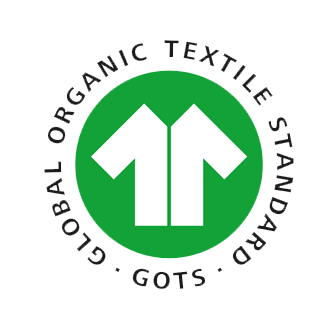Many people love the classics, but I always notice true fashion lovers seek something different—unique and niche styles that tell a story. I have been inspired by these rare pieces. They not only add personality to a wardrobe but also share the culture behind every stitch.
Unique and niche types of tops for women include culturally inspired designs like kurtis, cheongsams, kaftans, and huipils. These styles show deep heritage and are gaining new popularity as global fashion trends embrace diversity and local artistry.
When I started traveling to source fabrics, I discovered how a single top can represent a region, a festival, or a family’s history. If you want to wear something meaningful, this guide is for you. I will help you explore unique tops from around the world and how they are reimagined for today’s fashion.
How Do Cultural and Regional Styles Influence Types of Tops?
When I visit new countries or work with overseas clients, I see how local traditions shape clothing. Every region brings a special flavor. These influences keep global fashion fresh and vibrant.
Cultural and regional styles influence women’s tops by adding special patterns, embroidery, silhouettes, and fabrics. They often carry stories and symbolism from the community or country where they began.
The Power of Cultural Identity in Fashion
Fashion is not only about trends. It is about identity. I see how tops like the Japanese kimono-sleeve blouse, Indian kurti, Moroccan kaftan, and Mexican huipil are not just clothes—they are cultural signatures. Many of these pieces use hand-done embroidery, bold colors, or rare textiles. Designers worldwide now take these classic details and blend them into new styles. This creates tops that feel both modern and rooted in history.
| Top Style | Region | Key Features | Modern Fusion Example |
|---|---|---|---|
| Kimono Top | Japan | Wide sleeves, wrap front, obi tie | Kimono cardigans, wrap blouses |
| Kurti | India | Tunic length, straight cut, embroidery | Short kurtis with jeans |
| Cheongsam/Qipao Top | China | Stand collar, side slits, fitted shape | Sleeveless cheongsam tops |
| Kaftan | Middle East | Loose fit, often long, ornate patterns | Kaftan shirts, beach coverups |
| Huipil | Mexico | Boxy shape, vivid woven patterns | Huipil-inspired crop tops |
Every piece connects you with a place and its people.
Polo Shirt
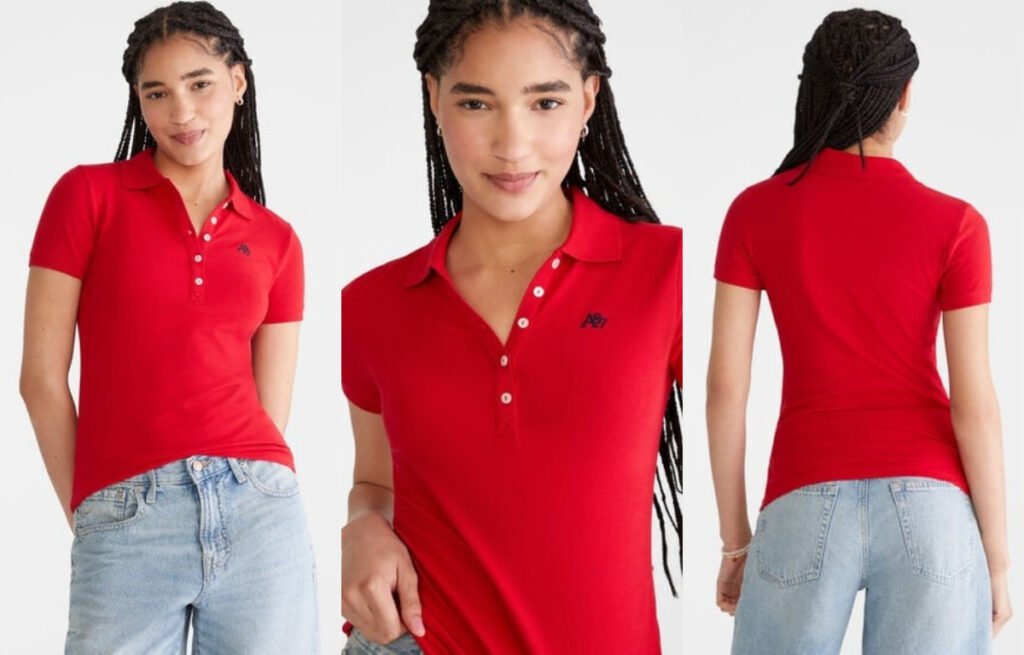
What Is a Polo Shirt and Why Is It Popular Among Women?
The polo shirt began as sportswear, but now it’s everywhere. I see it in offices, classrooms, and on city streets. Its blend of comfort and polish makes it a wardrobe hero for women of all ages.
A polo shirt features a flat collar, a short button placket, and short sleeves. Its structured-yet-soft silhouette works for both relaxed and smart-casual looks, making it a favorite for women seeking versatile fashion.
The Evolution and Appeal of the Polo
Polo shirts have roots in tennis and golf, where breathability and movement matter. Over time, brands adapted the style with new colors, fits, and materials for women. I’ve noticed that women prefer polos for their ability to switch between sporty and polished looks easily. For brands like mine, polos offer a blank canvas—solid colors for uniforms, bold stripes for fun, and soft pastels for spring collections.
| Feature | Benefit for Women | Modern Variation Examples |
|---|---|---|
| Collar | Sharpens casual looks | Ribbed, contrast-tipped |
| Button Placket | Adjustable neckline | Deep or short placket |
| Fabric | Comfort, breathability | Piqué cotton, performance knit |
| Fit | Flattering, body-friendly | Slim, regular, oversized |
Polos also give a subtle nod to tradition while fitting right into today’s trends.
How Do Polo Shirts Compare to Other Classic Tops?
Many women ask me if a polo is just another T-shirt or a type of blouse. The differences are real—and important for style and comfort.
Polo shirts offer more structure than a T-shirt and more comfort than a blouse. The collar and placket set polos apart, giving them a semi-formal edge that is missing in regular tees.
Polo vs. Tee vs. Blouse
Polo vs. T-Shirt
A T-shirt is relaxed, usually without a collar or buttons. Polos add shape to the shoulders and neckline. I use polos for active-casual collections, while tees work best for laid-back, everyday styles.
Polo vs. Blouse
Blouses can be flowy or fitted, often with delicate details. Polos keep things neat and sporty, and I often recommend them to women who want a balance between casual and business-casual.
| Top Type | Collar | Buttons | Fit | Best For |
|---|---|---|---|---|
| Polo | Yes | Yes | Structured | Smart casual, sports |
| T-shirt | No | No | Relaxed | Everyday, casual |
| Blouse | Optional | Optional | Flowy/tailored | Work, events |
The table above shows why polos fill a unique space between comfort and class.
How Do Fabric Choices and Details Affect Polo Shirt Performance?
When developing new polos, I pay extra attention to fabric and construction. This is where the difference between a cheap and a premium polo really shows.
Most women’s polos use piqué cotton, jersey knit, or blends with stretch. The fabric affects breathability, durability, and even how colors look. Details like ribbed collars, reinforced seams, and side vents improve fit and comfort.
Material Science in Polo Shirts
Piqué Cotton
The classic choice. It’s textured, breathable, and keeps its shape. I recommend this for uniforms or activewear.
Jersey Knit
Softer and smoother, often chosen for a more relaxed feel. Jersey polos drape better and are good for daily wear.
Performance Blends
Polyester, elastane, or moisture-wicking fabrics bring polos into the world of sports. These keep you cool and dry, and resist wrinkles.
Details That Matter
I always include reinforced collars, neat stitching, and subtle branding. Side slits or vents let the shirt move with you, especially important for active clients.
| Fabric/Detail | Comfort | Durability | Ideal Use |
|---|---|---|---|
| Piqué Cotton | High | High | Classic, active, uniforms |
| Jersey Knit | Soft | Moderate | Everyday, relaxed |
| Poly/Performance | Cool | Very High | Sports, travel, hot weather |
| Ribbed Collar/Cuffs | Fit | High | Maintains structure |
Good polos last longer and feel better—this is why I test every batch before adding to my collections.
How to Style Polo Shirts for Different Occasions?
Many women think polos are hard to style. I used to believe the same until I started pairing them with different pieces for lookbooks and shows.
Polo shirts can be styled for work, leisure, or events. Pair with jeans for casual days, tuck into skirts for smart-casual, or layer under jackets for a sharp office look. Accessories help shift the vibe.
Real-World Polo Shirt Styling Tips
For the Office
Tuck a slim-fit polo into tailored pants or a pencil skirt. Add a statement necklace or small earrings. I often recommend neutral colors like navy, black, or cream for a polished look.
For Casual Outings
Go for a looser polo with denim shorts, boyfriend jeans, or even joggers. Roll the sleeves for a relaxed feel. Bright colors or stripes add fun.
For Sports and Travel
Choose a performance fabric polo with leggings or athletic skirts. I’ve seen athletes and travelers love these for the mix of comfort and utility. Don’t forget a cap and sneakers.
For Layering
Wear under a blazer or light jacket. For colder days, layer with a cardigan or sweater draped over your shoulders.
| Occasion | Recommended Polo Type | Styling Tip |
|---|---|---|
| Office | Slim-fit, classic | Tucked in, with jewelry |
| Casual | Relaxed, colorful | With jeans or shorts, untucked |
| Sports/Travel | Performance, moisture-wick | With leggings or skorts |
| Transitional | Any, easy to layer | Under jackets, sweaters |
Mix and match to discover your own style. I always tell my clients: the best look is the one that feels right for you.
Zip Polo
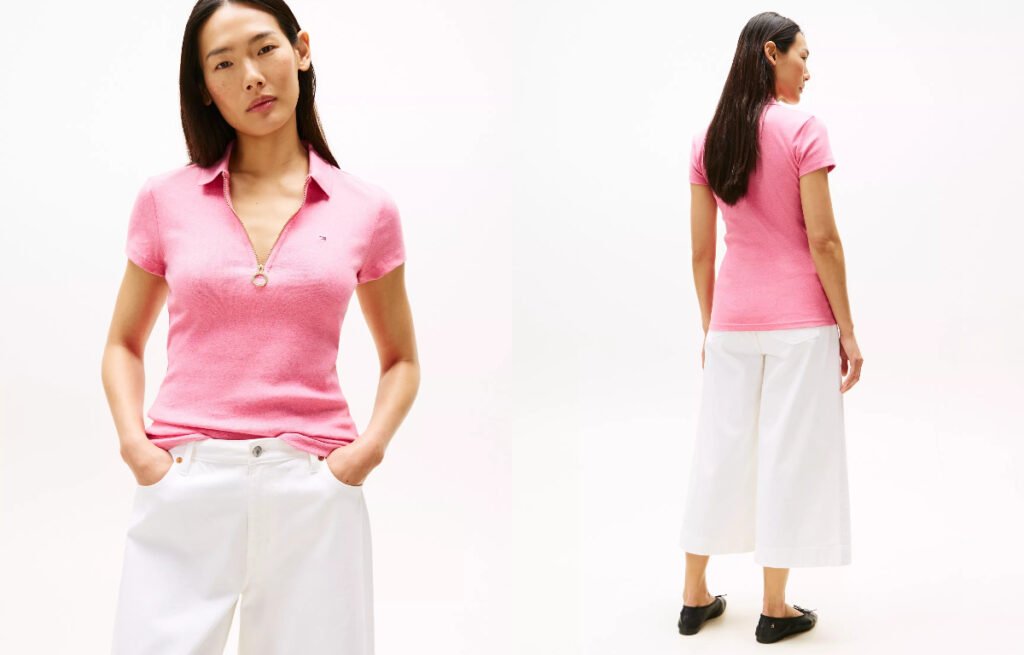
What Defines a Zip Polo and Why Is It Trending?
In the last few years, I’ve watched more women choose zip polos over traditional buttoned ones. It’s easy to see why: the zipper gives a clean, modern edge and is super practical.
A zip polo swaps the button placket for a zipper—usually at the center front. This not only makes it easier to wear but also helps control neckline depth, giving more styling options and a bolder look.
The Rise of the Zip Polo
The popularity of athleisure and streetwear pushed the zip polo forward. Brands now offer zip polos in bright colors, cropped cuts, and even performance fabrics. I think the zipper appeals to younger consumers and those who want to update their wardrobe without losing comfort.
| Key Feature | Classic Polo | Zip Polo |
|---|---|---|
| Neck Opening | Buttons | Zipper |
| Style Impact | Preppy, timeless | Sporty, modern |
| Functionality | Adjustable | More customizable |
| Appeal | All ages | Youth, active, trendy |
Zip polos are now seen in tennis, golf, city streets, and creative workspaces.
How Does the Zip Polo Compare to Classic Polos and Other Tops?
Many people ask if the zip polo is just a trend or if it offers something real. From my own experience and feedback from clients, it’s more than a trend—it’s a style update with real benefits.
The zip polo offers the same collar and comfort as a regular polo but with a sharper, more fashion-forward look. It stands apart from tees and blouses by adding a subtle, sporty statement and making quick outfit changes easier.
Why Choose a Zip Polo?
Zip Polo vs. Classic Polo
The zipper adds attitude and makes the top feel new. I use zippers with metallic finishes or contrast tapes for extra personality. Unlike buttons, zippers never gape or pull, so the fit stays smooth. Zip polos can also be opened wide or zipped up for warmth and modesty.
Zip Polo vs. T-Shirt
T-shirts are basic and relaxed. The zip polo, with its collar and zipper, steps up the style. It’s perfect for clients who want more polish without losing comfort.
Zip Polo vs. Activewear
Zip polos often use high-performance fabrics. I design them for clients who want to look good during golf, tennis, or travel, but also wear them for city errands or work.
| Top Type | Neckline | Fit | Best For | Unique Value |
|---|---|---|---|---|
| Zip Polo | Zipper collar | Slim/relaxed | Sporty-casual, events | Style, ease, versatility |
| Classic Polo | Button placket | Structured | Preppy, office, sports | Tradition, classic look |
| T-Shirt | Crew/V-neck | Relaxed | Everyday, basic wear | Simplicity, comfort |
Zip polos fit those who want to try something new, but not too radical.
How Do Zippers and Fabrics Affect Function and Style?
When it comes to zip polos, the zipper and the fabric are everything. I always tell my clients: the wrong zipper can ruin a great shirt, and the right material takes it from basic to best-selling.
Quality zippers make a zip polo more durable and stylish, while fabric choices—from piqué cotton to performance knits—affect breathability, comfort, and even color intensity. Metal zippers give an edge; plastic ones keep it light and sporty.
Fabric and Zipper Decisions
Zipper Choices
I use YKK metal or high-grade nylon zippers. Metal looks bold but can add weight. Nylon is smooth and better for sports. Exposed zippers add attitude; hidden zippers give a minimalist touch.
Fabric Innovations
Piqué cotton is still the top choice for classic feel. But I also blend in spandex for stretch or use moisture-wicking poly for high-activity pieces. A soft, brushed finish feels cozy; mesh panels add ventilation.
Design Details
Details matter. I add contrast zipper tapes, color-block panels, and even cropped hems for younger markets. For luxury brands, I’ll use silk-blend knits and custom zipper pulls.
| Feature | Impact on Performance | Example Use |
|---|---|---|
| Metal Zipper | Durability, boldness | Fashion-forward, casual chic |
| Nylon Zipper | Lightweight, flexible | Activewear, summer styles |
| Piqué Cotton | Breathable, structured | Classic, workwear |
| Performance Knit | Stretch, quick-dry | Sports, travel |
| Special Details | Personality, uniqueness | Color tape, logo pulls |
I always test the zipper’s glide and the fabric’s stretch to ensure the top works in real life.
How to Style a Zip Polo for Different Occasions?
Many clients worry that the zipper makes a top too casual. Actually, it’s easy to style for almost any situation.
Wear a zip polo half-zipped with a skirt for smart-casual, or fully zipped with joggers for sporty looks. Try layering under a blazer for office-ready, or tuck into high-waist trousers for city chic. Accessories and shoes shift the mood.
My Styling Guide for Zip Polos
Smart-Casual
Pair a slim-fit zip polo with tailored pants or a midi skirt. Half zip for a relaxed neckline, add hoop earrings or a watch.
Sporty
Go with leggings, biker shorts, or tennis skirts. Keep the zipper down for ventilation during activity. Bright sneakers complete the look.
Urban
Try an oversized zip polo with mom jeans or cargo pants. Chunky boots or sandals make the outfit bold. Layer necklaces or a bucket hat for extra attitude.
Creative Workspaces
Zip polos look great under jackets or cardigans. Use neutral colors for a subtle look, or bold prints to stand out.
| Occasion | Zip Polo Style | Key Styling Tip |
|---|---|---|
| Smart-Casual | Slim, solid or stripe | Half zip, tucked in, accessories |
| Sporty | Performance, mesh | Unzipped, with active bottoms |
| Urban | Oversized, bold colors | Loose fit, statement shoes |
| Work/Creative | Neutral, fine knit | Layered under blazer or cardigan |
I always tell clients: Experiment with the zipper—half, full, or barely zipped. Small changes make a big difference.
Knit Top
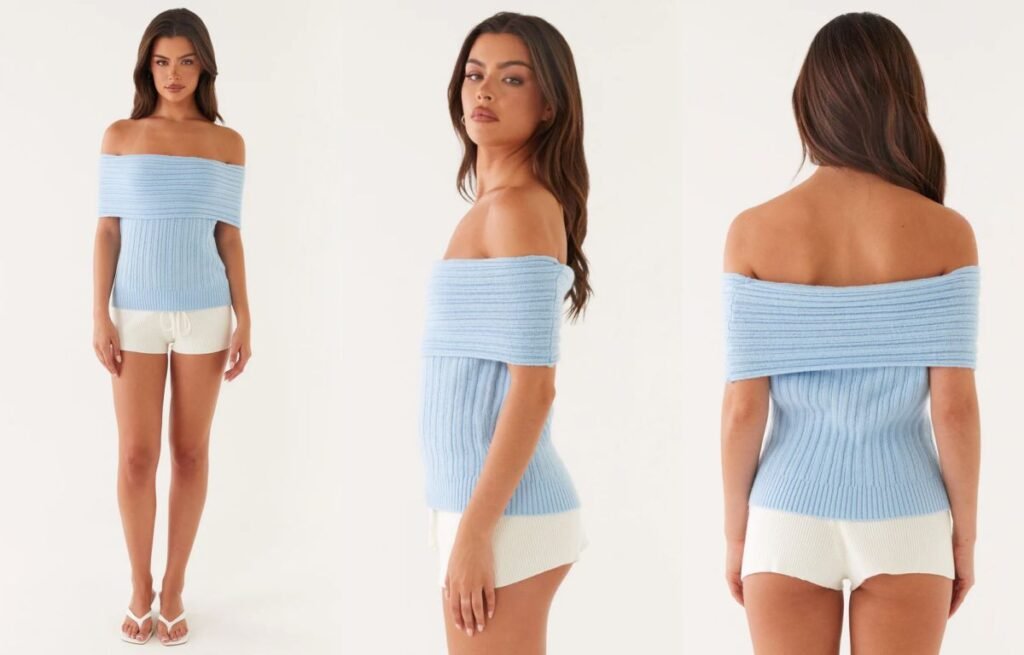
What Exactly Is a Knit Top and How Is It Made?
Some people confuse “knit” with “sweater,” but the truth is, knit describes the fabric—not just the style. I explain this to clients all the time.
A knit top is made from fabric created by interlocking loops of yarn, making it stretchier and softer than woven fabrics. These tops can be lightweight, heavy, fitted, or loose, depending on yarn and construction.
Understanding the Construction of Knit Tops
Knit fabric is made on special machines or by hand. Instead of weaving threads over and under each other, knit uses a loop system. This creates natural stretch and resilience. There are two main types:
| Knit Type | How It’s Made | Common Uses | Texture/Weight |
|---|---|---|---|
| Weft Knit | Loops run crosswise | T-shirts, sweaters | Soft, stretchy |
| Warp Knit | Loops run lengthwise | Sportswear, lingerie | Stable, smooth |
Knit tops can be ribbed, cable, jacquard, or plain. I often design ribbed knits for a snug fit, or use open-knit for breezy summer tops.
How Do Knit Tops Compare to Woven Tops?
A lot of women ask me why knit tops feel different from blouses and shirts. The answer is in the fabric’s behavior.
Knit tops are softer, stretchier, and more form-fitting than woven tops, which are crisper and less flexible. Knit tops allow more movement and comfort, making them perfect for active days or relaxed looks.
The Key Differences and What They Mean
Knit vs. Woven – Feel and Fit
- Knit Tops: Stretch in every direction, fit closer to the body, and recover their shape after washing.
- Woven Tops: Usually hold a fixed shape, wrinkle more, and feel firmer to the touch.
| Fabric Type | Stretch | Fit | Best For | Common Examples |
|---|---|---|---|---|
| Knit | High | Flexible | Casual, layering, active | T-shirt, sweater, tank |
| Woven | Low | Structured | Formal, sharp looks | Shirt, blouse, jacket |
Why I Love Knits
Knits are forgiving. I always recommend them to clients who want tops that move with them, especially for travel or days with lots of activity.
How Do Different Knitting Techniques and Materials Affect Knit Tops?
Every knit top is not the same. I spend a lot of time choosing yarns and knitting methods because these choices change everything—look, feel, and performance.
Different knitting techniques (like rib, jersey, or cable) and materials (cotton, wool, synthetics) give knit tops unique textures, warmth, and durability. Fine knits work for layering, while chunky knits add style and warmth.
The Art and Science Behind Knit Tops
Knitting Techniques
- Rib Knit: Uses alternating knit and purl stitches. Makes fabric extra stretchy—great for fitted tops and cuffs.
- Jersey Knit: Smooth on one side, soft and slightly stretchy—used in most T-shirts.
- Cable Knit: Creates raised patterns. Adds interest to sweaters and heavier tops.
- Jacquard Knit: Allows for colorful patterns and textures.
Materials
- Cotton: Soft, breathable, and easy to wash. Perfect for all seasons.
- Wool: Warm, insulating, and moisture-wicking. Best for cold months.
- Acrylic/Synthetics: Lightweight, quick-drying, affordable.
- Blends: Combine benefits, like cotton-poly for stretch and durability.
| Technique/Material | Key Benefits | Typical Uses |
|---|---|---|
| Rib/Cotton | Stretch + comfort | Tanks, fitted tees |
| Jersey/Blend | Smooth, drapey, easy care | Everyday tops, basics |
| Cable/Wool | Warmth, texture | Sweaters, winter tops |
| Jacquard/Synthetic | Pattern, durability | Statement tops, sports |
What I Watch Out For
Pilling, stretching out, or shrinking are common issues. I test new yarns and washes before adding to my collection, so my clients get tops that last.
How to Style Knit Tops for Different Occasions?
A knit top is never just a basic. I find that it can anchor an outfit or act as a highlight piece. Here’s how I style them for my clients:
Wear a ribbed knit with high-waist pants for a sharp, fitted look. Pair a loose knit with a skirt for easy chic. Use fine knits as layering pieces under jackets, or chunky knits as statement tops in fall and winter.
Styling Inspiration and Tips
Work/Business
- Fine gauge knit tops in neutral tones look clean and professional. Layer under a blazer or tailored vest.
- Try a sleeveless knit shell with a pencil skirt for summer offices.
Casual/Weekend
- Boxy or oversized knit tees with denim shorts or joggers.
- Cropped rib knit tops with high-waist jeans.
Evening or Events
- Off-shoulder knit tops or styles with metallic yarn for nights out.
- Cable or jacquard knit tops with leather skirts or tailored trousers.
Seasonal Ideas
| Season | Knit Top Type | Styling Tips |
|---|---|---|
| Spring/Summer | Lightweight cotton, open-knit | Layer over tanks, pair with linen pants |
| Fall | Ribbed long-sleeve, fitted | Tuck into skirts, add ankle boots |
| Winter | Chunky cable, wool blends | Wear with jeans, scarves, coats |
Don’t forget accessories—scarves, jewelry, or hats always work with knits.
Sweater
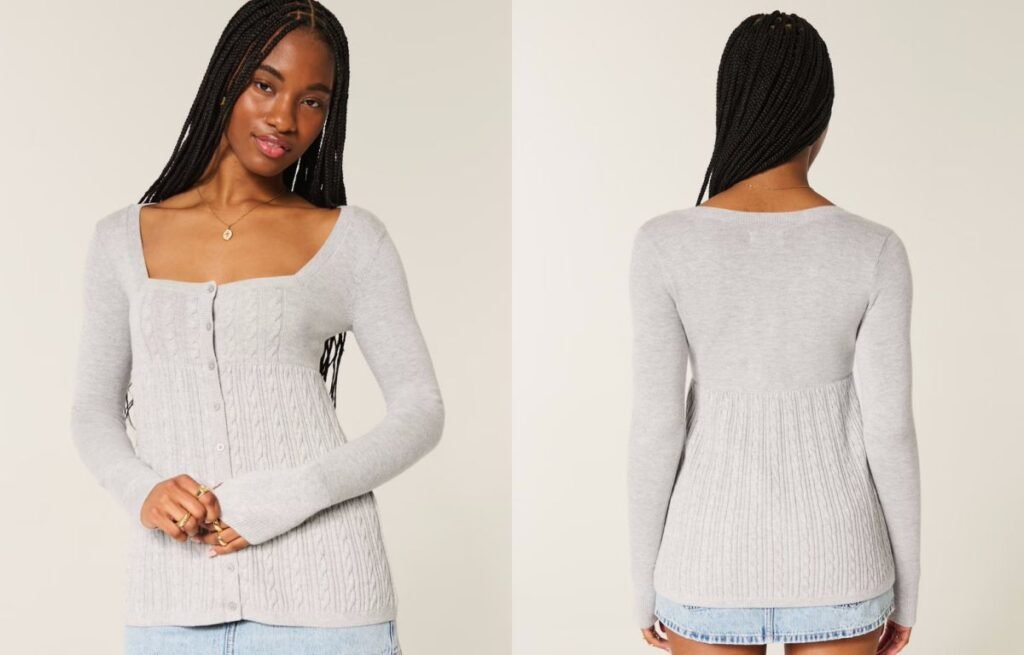
What Makes a Sweater Unique Compared to Other Knit Tops?
A lot of people ask me what separates a sweater from other knitwear. The answer is in the weight, texture, and purpose.
A sweater is heavier and warmer than a typical knit top, often designed for layering or standalone wear in cool weather. Unlike lightweight knits, sweaters use thicker yarns and varied patterns for insulation and style.
The Structure and Function of Sweaters
Sweaters are made on large, specialized machines or hand-knitted for unique pieces. They use a range of knitting techniques: cable, rib, seed stitch, and more. What sets them apart:
| Feature | Sweater | Other Knit Tops |
|---|---|---|
| Yarn Weight | Medium to heavy | Light to medium |
| Warmth | High | Moderate/low |
| Purpose | Insulation, style | Layering, base layer |
| Texture | Chunky, varied | Smooth, simple |
Sweaters keep you warm, but they can also be fashion statements or comfort items.
How Do Sweater Styles Differ—And Why Does It Matter?
Sweater design is much more than just a pullover. I work with dozens of shapes and details, each with its own use.
Common sweater styles include pullovers, cardigans, turtlenecks, v-necks, and cropped or oversized designs. Each style changes how you layer, accessorize, and express yourself.
Exploring Sweater Styles in Detail
Pullover
This classic style slips over the head and works for all ages. It can be fitted or loose, with simple lines or dramatic patterns.
Cardigan
Cardigans open at the front, with buttons or zippers. I find them perfect for layering or adding structure to outfits. Some are long and flowy, others short and boxy.
Turtleneck & Mock Neck
Turtlenecks cover the neck for warmth and elegance. Mock necks are shorter and less bulky—great for a modern look.
V-Neck, Crewneck, Boat Neck
The neckline changes the mood: v-neck for lengthening, crew for classic, boat for a gentle, wide look.
| Style | Key Feature | Best For |
|---|---|---|
| Pullover | No opening, simple | Everyday, layering |
| Cardigan | Open front, buttons | Office, travel, layering |
| Turtleneck | High neck coverage | Winter, smart-casual |
| Cropped | Short length | Trendy, high-waist looks |
| Oversized | Loose fit, drapey | Comfort, street style |
Sweater style lets you shift from cozy weekend to sharp office look in seconds.
How Do Materials and Construction Affect Sweater Performance?
Not all sweaters are the same—materials make a big difference in warmth, comfort, and longevity.
Wool is warm and resilient. Cotton is breathable and soft. Synthetics add stretch and make care easy. The way a sweater is knitted (tight, loose, patterned) changes how it feels and wears.
The Science of Sweater Materials
Wool
Merino, cashmere, lambswool—all offer different levels of softness, warmth, and price. I recommend wool for cold climates or luxury looks.
Cotton
Cotton sweaters are perfect for spring and early fall. They breathe well and layer easily.
Synthetic Fibers
Acrylic, polyester, and blends make sweaters lighter, faster to dry, and budget-friendly. These are great for those with wool allergies.
Construction
Tight knits trap heat and keep their shape. Loose or open knits feel breezy and light. Cable knits and other patterns add thickness and texture.
| Material | Warmth | Softness | Care | Cost |
|---|---|---|---|---|
| Wool | High | High | Hand wash, dry | $$$ |
| Cotton | Medium | High | Machine wash | $$ |
| Synthetics | Low/Med | Med | Easy care | $ |
| Blends | Varies | Varies | Easy/moderate | $$ |
I always test sweaters for pilling, shrinkage, and stretch before they go into production.
How to Style Sweaters for All Seasons and Occasions?
A sweater is not just for cold days. With the right styling, it works all year.
Layer a lightweight sweater over a dress for spring. Wear a chunky turtleneck with jeans in winter. Pair a cropped sweater with high-waist pants for a trendy summer evening. Use accessories to set the tone—scarves, belts, or bold jewelry.
Styling Strategies for Every Situation
Office
Choose a fine-knit cardigan or crewneck pullover. Pair with tailored pants or a pencil skirt. For extra polish, drape a sweater over your shoulders.
Casual
Oversized or boxy sweaters with leggings or joggers. Try a half-tuck with denim for relaxed weekends.
Travel
Cardigans and long pullovers are perfect for changing weather. I always recommend neutral shades for easy mixing and matching.
Going Out
Cropped or off-shoulder sweaters with statement earrings and heels. Add texture with cable knits or metallic yarns.
| Occasion | Sweater Style | Styling Tip |
|---|---|---|
| Office | Cardigan, crewneck | Layer with blouses, trousers |
| Casual | Oversized, pullover | Jeans, sneakers, easy jewelry |
| Travel | Long cardigan | Leggings, slip-ons, backpack |
| Evening | Cropped, fancy knit | High-waist skirt, heels, clutch |
The best part: a good sweater always makes you feel at home, wherever you are.
Turtleneck Sweater
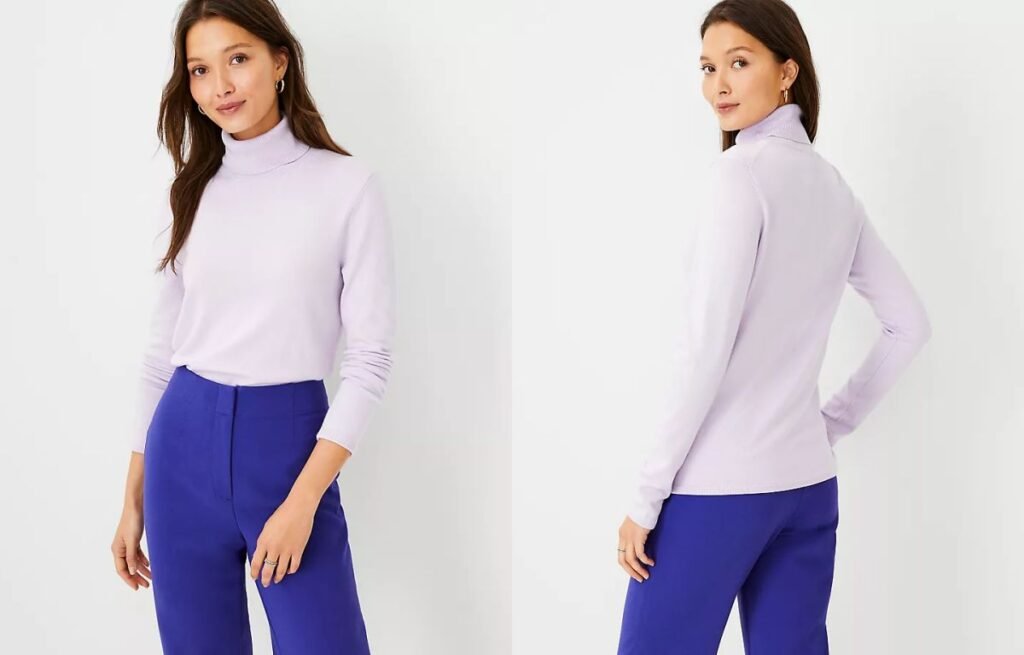
What Defines a Turtleneck Sweater and Its Key Features?
Turtlenecks have been around for generations, but they still feel modern. I often recommend them to clients looking for both function and style.
A turtleneck sweater is defined by its tall, snug collar that can be folded down or left standing. It is usually made from knit fabrics, offering warmth, neck coverage, and a sleek silhouette that flatters most body shapes.
Anatomy and History of the Turtleneck
The turtleneck’s origins go back to European sports and workwear. Over time, it became a favorite among artists, intellectuals, and style icons. Today, you’ll see turtlenecks in everything from thin ribbed knits to chunky wool. Some have fitted sleeves and bodies for a streamlined look, while others are relaxed and slouchy.
| Feature | Turtleneck Sweater | Why It Matters |
|---|---|---|
| Collar | High, close-fitting | Keeps neck warm, frames face |
| Knit Type | Fine or chunky | Adjusts warmth, style |
| Body Fit | Slim or oversized | Matches personal style |
| Versatility | High | Works for all occasions |
The turtleneck stands out for its blend of practicality and effortless chic.
How Do Turtleneck Sweaters Compare to Other Sweater Styles?
A lot of women ask me if a turtleneck will suit them better than a crewneck or V-neck. The answer depends on personal taste, body type, and how you want to use the sweater.
Compared to other sweaters, the turtleneck offers more warmth and a refined neckline. Unlike crewnecks or V-necks, it creates a vertical line that elongates the neck and adds sophistication, making it a top pick for winter and layering.
Style Showdown—Turtleneck vs. Crewneck vs. V-Neck
Turtleneck
- Best for cold days and sharp, smart looks.
- Draws attention to the face.
- Great for layering under jackets or dresses.
Crewneck
- Classic round neckline.
- Suits all ages, easy to style.
- Works well as a base for jewelry or scarves.
V-Neck
- Creates a lengthening effect for the torso.
- Good for layering shirts underneath.
- Suits most face shapes, shows off necklaces.
| Sweater Style | Warmth | Neckline | Best For |
|---|---|---|---|
| Turtleneck | High | Tall, snug | Cold weather, layering |
| Crewneck | Medium | Round | Everyday, casual, work |
| V-Neck | Medium | V-shaped | Layering, accessorizing |
The turtleneck is the ultimate choice when you want both fashion and function.
How Do Materials, Fit, and Knit Techniques Impact the Turtleneck Sweater?
Every season, I test new yarns and fits for turtlenecks. These details make a huge difference in comfort, durability, and appearance.
Materials like wool, cashmere, cotton, and synthetics each affect warmth, softness, and care. Fine-gauge knits give a sleek, lightweight feel, while chunky knits offer texture and insulation. Fit—slim or oversized—lets you play with different silhouettes.
Finding the Perfect Turtleneck for You
Materials
- Wool & Cashmere: Warm, soft, luxury feel, often hand-wash only.
- Cotton: Lighter, breathable, ideal for milder climates or indoor use.
- Synthetics/Blends: Easy-care, stretch, affordable, and quick-drying.
Knit Techniques
- Ribbed Knit: Clings to the body, creates a flattering, stretchy fit.
- Plain Knit: Smooth, classic look, can be thin or thick.
- Cable Knit: Adds visual interest, extra warmth, and a cozy vibe.
Fit
- Slim-Fit: Perfect for layering under blazers, dresses, or vests.
- Oversized: Great for a relaxed, modern look. Works well with leggings or skinny jeans.
| Material | Softness | Warmth | Care | Best Use |
|---|---|---|---|---|
| Wool/Cashmere | High | High | Hand-wash | Winter, events |
| Cotton | Medium | Medium | Machine | Spring/Fall |
| Synthetics | Medium | Medium | Easy | Everyday, active |
| Blends | Varies | Varies | Easy | All-purpose |
I always consider these details to ensure every turtleneck meets my clients’ needs.
How to Style Turtleneck Sweaters for Work, Leisure, and Events?
A turtleneck is more than just a layer. I love using it to anchor an outfit or add a sleek twist. The secret is in how you style it for different occasions.
Pair a fitted turtleneck with a pencil skirt or trousers for work. Go for chunky, oversized turtlenecks with jeans or leather pants for weekends. Use thin turtlenecks as layering pieces under slip dresses or blazers for trendier looks.
Real-Life Styling Strategies
Work
- Black or neutral turtleneck with tailored pants or a skirt.
- Add a blazer for sharp, boardroom-ready style.
Casual
- Chunky or oversized turtleneck with distressed jeans.
- Try layering a turtleneck under a denim jacket or sleeveless dress for contrast.
Night Out or Events
- Ribbed turtleneck tucked into a leather skirt, finished with heels and bold earrings.
- Layer with statement necklaces or a long coat.
| Occasion | Turtleneck Style | Styling Tip |
|---|---|---|
| Office | Slim, fine-knit | With blazer, tucked in |
| Casual | Chunky, oversized | With jeans, half-tucked |
| Events | Ribbed, bold colors | With skirts, statement jewelry |
| Trendy | Layered, fitted | Under slip dresses, jackets |
Accessories like scarves, earrings, or hats add personality to any turtleneck look.
V-neck Sweater
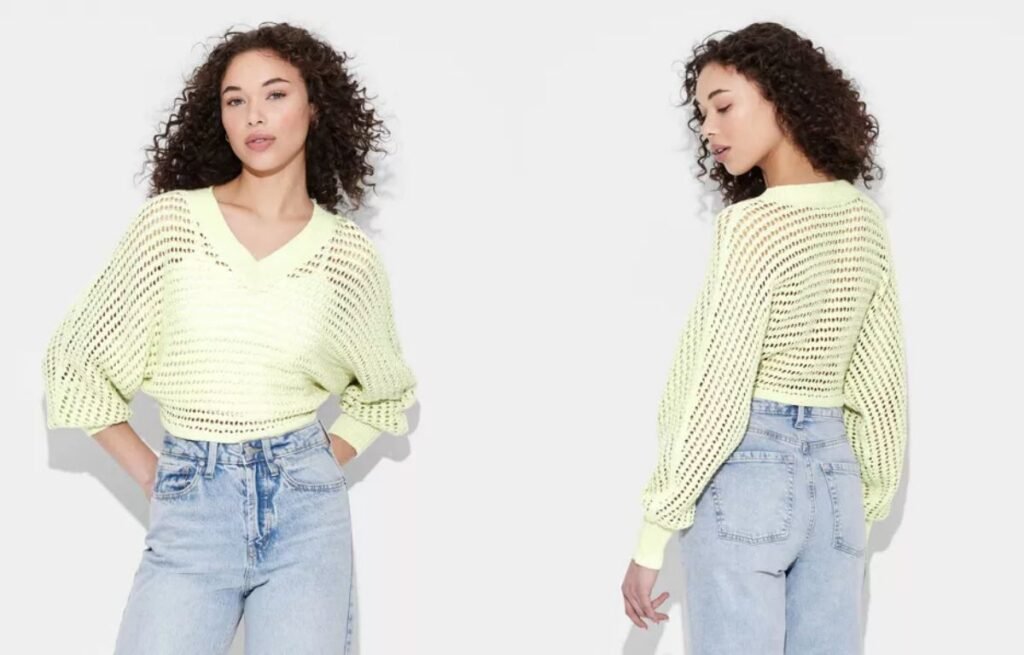
What Defines a V-Neck Sweater and Its Key Features?
The V-neck sweater looks simple, but it’s more than just a cut—it’s a design that works for almost everyone. I see it make people look taller and more put together.
A V-neck sweater is a knit top with a V-shaped neckline that drops lower than a crewneck, showing part of the collarbone and upper chest. This neckline creates a vertical line that flatters most face shapes and body types.
The V-Neck—Design Details and Variations
There are many types of V-neck sweaters. Some have shallow Vs for a subtle effect; others have deep Vs for a bolder look. The collar can be finished with ribbing, rolled edges, or even contrast trims. V-necks work well in both slim and relaxed fits, and with almost any yarn.
| Feature | V-Neck Sweater | Why It Matters |
|---|---|---|
| Neckline | V-shaped, varying depth | Elongates neck, flatters face |
| Fit | Slim, relaxed, oversized | Suits many body types |
| Versatility | High | Layers well, suits all styles |
| Seasonality | Year-round | Light to chunky knits available |
The V-neck design balances out wide shoulders and draws the eye up—making it especially good for layering or accessorizing.
How Does the V-Neck Sweater Compare to Other Sweater Styles?
Clients often ask me if they should choose a V-neck, crewneck, or turtleneck. The answer depends on your goals and personal style.
The V-neck sweater stands out for its open neckline, which is less restrictive than a turtleneck and more flattering for many face shapes than a crewneck. It’s also the easiest sweater style for layering over shirts or under jackets.
V-Neck vs. Crewneck vs. Turtleneck
V-Neck
- Highlights the neck and collarbone.
- Layers easily over button-down shirts or camisoles.
- Works for casual, office, and evening looks.
Crewneck
- Has a classic round neck.
- Offers a timeless, simple look—best for basics.
- Good for showcasing necklaces or scarves.
Turtleneck
- Has a high, close-fitting collar.
- Great for extra warmth in winter.
- Adds sophistication and works as a statement piece.
| Sweater Style | Neckline | Best For | Layering Potential |
|---|---|---|---|
| V-Neck | V-shaped | All occasions | High |
| Crewneck | Round | Everyday, classic | Medium |
| Turtleneck | High | Winter, smart-casual | Medium |
V-necks give you the most flexibility, especially if you like mixing shirts and sweaters.
How Do Materials, Fits, and Knit Patterns Affect V-Neck Sweaters?
A good V-neck sweater is all about how it feels and fits. As a designer, I spend a lot of time choosing yarns and patterns for this reason.
Materials like wool, cotton, cashmere, or blends affect softness, warmth, and drape. Fine-gauge knits are sleek and professional, while chunky knits add texture and comfort. Fit—slim, relaxed, or oversized—lets you match any mood or body shape.
The Construction and Feel of V-Neck Sweaters
Materials
- Wool & Cashmere: Offer warmth and a luxe feel, best for winter and dressier looks.
- Cotton: Breathable and soft, good for layering or warmer weather.
- Synthetic Blends: Add stretch and durability, make care easier.
Knit Patterns
- Fine-Gauge: Thin, smooth, great for office wear or under jackets.
- Chunky/Heavy: Adds drama and warmth—good for fall and winter.
- Cable or Rib Knit: Adds visual interest, stretches to fit the body.
Fits
- Slim: Layers well, looks tailored and neat.
- Relaxed: Offers comfort and a casual look.
- Oversized: Makes a statement, great for modern streetwear.
| Material/Pattern | Softness | Warmth | Drape | Best For |
|---|---|---|---|---|
| Cashmere/Wool | High | High | Soft, fluid | Winter, dressy |
| Cotton | Medium | Medium | Structured | Spring/fall, layering |
| Blends | Medium | Medium | Varies | All-purpose |
| Chunky/Cable | Varies | High | Cozy, bold | Trendy, cold days |
| Fine-Gauge | High | Light | Sleek | Office, layering |
Testing and wearing many samples, I always check for pilling, shrinkage, and how the neckline sits after washes.
How to Style a V-Neck Sweater for Any Occasion?
The V-neck sweater is a style chameleon. I see it work for office days, weekends, or evenings out—just by changing what you wear with it.
For work, layer a V-neck over a crisp shirt or under a blazer. For casual, wear alone with jeans or over a slip dress. Dress up with a silk cami underneath, heels, and bold earrings. The open neckline is perfect for statement jewelry or scarves.
Real-World Styling Scenarios
Office
- Slim V-neck sweater over a white shirt, with tailored pants or a pencil skirt.
- Neutral colors—navy, black, grey—work best for a professional vibe.
Casual
- Relaxed or oversized V-neck with distressed jeans and sneakers.
- Try half-tucking the front for a laid-back feel.
Evening
- Deep V-neck with a lace cami, leather pants, and heels.
- Add bold jewelry to draw the eye.
Transitional
- Layer under a trench coat or denim jacket.
- Pair cropped V-neck sweaters with high-waist skirts for spring or fall.
| Occasion | V-Neck Style | Key Styling Tip |
|---|---|---|
| Work | Slim, fine-gauge | Layer over shirt, tuck in |
| Casual | Relaxed, chunky knit | With jeans, sneakers, half-tuck |
| Evening | Deep V, soft yarn | Cami, bold jewelry, heels |
| Seasonal | Cropped, lightweight | With skirts, jackets, layering |
The V-neck’s open neckline always lets you personalize your look with necklaces or scarves.
Pullover
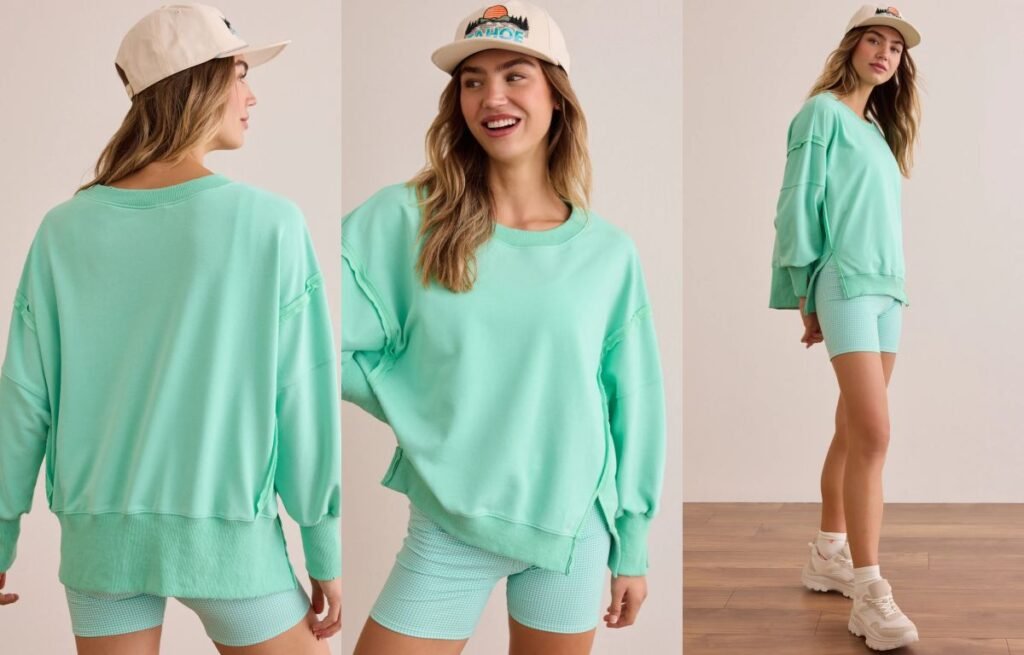
What Is a Pullover and Why Does It Remain Popular?
The pullover has a simple structure: no front opening, just slip it on and go. This makes it fast, fuss-free, and a blank canvas for personal style.
A pullover is a closed-front top, usually knit, that slips on over the head. It can be lightweight or chunky, fitted or oversized. Its appeal lies in comfort, simplicity, and the ability to adapt to every trend or season.
The History and Enduring Power of Pullovers
The pullover traces back to early hand-knitting traditions. It became famous as both a workwear staple and a symbol of casual luxury—think college sweaters, fisherman knits, and runway knits alike. Designers use everything from fine merino to chunky wool, or even cotton blends, to create pullovers that suit every climate.
| Pullover Feature | Why It Matters | Popular Examples |
|---|---|---|
| No fasteners | Easy to put on, no fuss | Crewneck, V-neck, turtleneck |
| Variety in knit | For all seasons | Lightweight, chunky, ribbed |
| Versatile style | Dressed up or down | With skirts, jeans, slacks |
| All ages | Universally flattering | Teens to seniors |
The pullover never looks outdated because it’s a foundation piece—easy to update with trends or keep timeless.
How Does the Pullover Compare to Cardigans and Other Sweater Styles?
People often ask me whether to choose a pullover or a cardigan. The difference is more than just how you put it on—it’s about the whole mood and styling options.
A pullover has no opening in the front, making it cleaner and often warmer than a cardigan. Cardigans open down the front with buttons or zippers, offering more layering flexibility. Pullovers feel neater, while cardigans give more control over temperature and look.
Pullovers vs. Other Sweaters
Pullover vs. Cardigan
- Pullover: Feels seamless, tidy, and cozy. Works best as a standalone piece or for simple layering.
- Cardigan: Adds flexibility—wear open or closed, layer easily, and adapt to changing temperatures.
Pullover vs. Hoodie/Sweatshirt
- Pullover Sweater: Often knit, more refined, can be styled up or down.
- Pullover Hoodie/Sweatshirt: Usually made from jersey or fleece, casual and sporty, adds a hood or pouch pocket.
Pullover vs. Vest
- Pullover Sweater: Has sleeves, provides full warmth.
- Pullover Vest: Sleeveless, for layering or adding interest to outfits.
| Sweater Type | Opening | Best For | Style Level |
|---|---|---|---|
| Pullover | None | All occasions | Classic, versatile |
| Cardigan | Front, open | Layering, flexibility | Relaxed, adjustable |
| Hoodie | None (with hood) | Sports, lounging | Casual, sporty |
| Vest | None (sleeveless) | Layering | Trendy, preppy |
For a streamlined, always-in-style look, I recommend starting with a pullover.
How Do Materials, Fits, and Knit Patterns Change the Pullover’s Look and Feel?
Not all pullovers are equal. Fabric, fit, and pattern decide whether a pullover is suited for the office, lounging, or a night out. I spend hours each season choosing the right mix for my clients.
Materials range from merino and cashmere to cotton, linen, or synthetics. Fit can be slim for layering, relaxed for comfort, or oversized for statement looks. Knit patterns—ribbed, cable, waffle—add personality and texture to every pullover.
Exploring Pullover Varieties
Materials
- Wool (Merino, Cashmere): Warm, breathable, and luxurious—best for winter and special occasions.
- Cotton & Linen: Lightweight, soft, and easy-care—great for spring, summer, or travel.
- Synthetics/Blends: Offer stretch, durability, and affordability. These resist pilling and shrinking.
Fits
- Slim: Best under jackets or for a sleek, office look.
- Relaxed: Gives extra comfort and a casual feel.
- Oversized: Trendy, modern, great with leggings or skinny jeans.
Knit Patterns
- Ribbed: Extra stretch, hugs the body, adds detail.
- Cable: Chunky texture, classic heritage style.
- Waffle or Basketweave: Visual interest, subtle structure.
- Plain (Stockinette): Smooth, simple, good for layering.
| Material/Pattern | Best For | Key Benefits |
|---|---|---|
| Cashmere/Wool | Cold weather, luxury | Warmth, softness |
| Cotton/Linen | Warm climates | Breathability, easy care |
| Synthetics/Blends | Everyday wear | Durability, low care |
| Cable/Ribbed | Statement pieces | Texture, interest |
| Fine-gauge/Plain | Office, layering | Sleek, professional |
I always test pullovers for softness, resilience, and how well they keep their shape after washing.
How to Style Pullovers for Work, Weekends, and Special Events?
Pullovers might look basic, but they are style chameleons. You can take the same pullover from Monday meetings to Sunday brunch with a few tweaks.
For work, pair a fine-gauge pullover with tailored pants or a skirt. For casual days, go oversized with jeans or leggings. Add statement necklaces, scarves, or belts to make a pullover stand out for events. Layer under a blazer, over a dress, or tied around the shoulders for extra flair.
Styling Pullovers Like a Pro
Work
- Slim-fit pullover in a neutral color.
- Tuck into trousers or pencil skirt, add delicate jewelry.
- Layer under a blazer or suit jacket for more polish.
Weekend
- Relaxed or oversized pullover with denim shorts or skinny jeans.
- Half-tuck the front for a casual look.
- Finish with sneakers or loafers.
Special Events
- Choose a pullover with metallic yarns or bold colors.
- Pair with a leather skirt, wide-leg trousers, or heels.
- Add bold earrings or a silk scarf.
Transitional and Layered Looks
- Use a lightweight pullover over a dress in spring/fall.
- Tie a bright pullover over your shoulders as an accent piece.
- Layer under a trench or denim jacket for added warmth.
| Occasion | Pullover Type | Styling Tip |
|---|---|---|
| Work | Fine-gauge, slim | Tucked in, under a blazer |
| Weekend | Oversized, relaxed | With jeans, sneakers, half-tucked |
| Events | Textured, bold | With statement skirt, jewelry |
| Transitional | Lightweight | Layered over dress or shirt |
A good pullover is a style anchor. You can build almost any look around it.
Cardigan
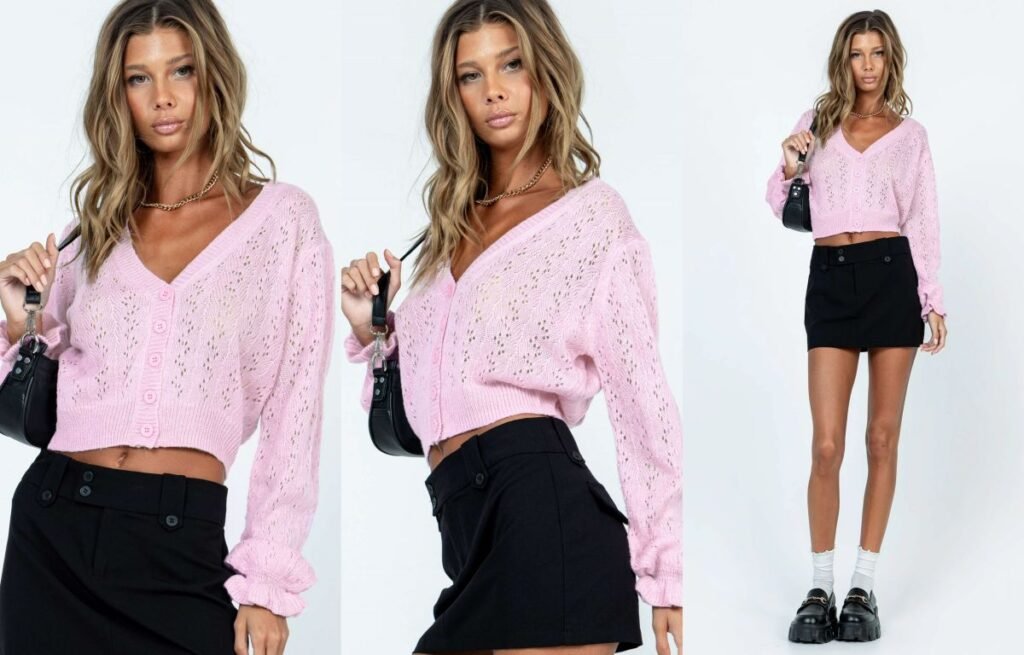
What Defines a Cardigan and Why Is It So Popular?
The cardigan stands out for one simple reason: it opens at the front, which lets you layer it, take it off, or adjust it to any weather. Unlike a pullover, you don’t mess up your hair when putting it on!
A cardigan is a knit garment with a front opening—often with buttons, zippers, or a belt. It can be cropped, long, fitted, or loose, making it suitable for any outfit and season. Its popularity comes from comfort, flexibility, and style.
The Evolution and Impact of the Cardigan
The cardigan dates back to 19th-century military uniforms but quickly became a fashion staple thanks to Coco Chanel. Today, you’ll find chunky cardigans for winter, light cotton or linen ones for summer, and even statement styles with embroidery, prints, or fringe.
| Cardigan Feature | Why It Matters | Examples |
|---|---|---|
| Front opening | Easy to layer, remove | Buttons, zippers, open-front |
| Length options | Suits all body types | Cropped, hip, duster |
| Fabric variety | For all seasons | Wool, cotton, blends, synthetics |
| Style range | Versatile | Classic, trendy, minimalist |
No other top gives you this much control over temperature, silhouette, or style.
How Do Cardigans Differ from Pullovers and Other Knit Tops?
Many people ask if a cardigan is really different from a pullover. The answer is yes—and the difference matters for styling and daily use.
A cardigan opens in the front, making it easy to put on or take off and ideal for layering. Pullovers have no front opening, offering a sleeker look and usually more warmth. Cardigans can double as jackets, add dimension, and suit all climates.
Comparing Cardigans with Other Tops
Cardigan vs. Pullover
- Cardigan: Front opening, adaptable for layering, can be worn open or closed, and is perfect for changing weather or indoor/outdoor use.
- Pullover: Closed front, worn over the head, simpler lines, and usually warmer.
Cardigan vs. Blazer
- Cardigan: Softer, more casual, easier to layer, machine washable.
- Blazer: Structured, formal, best for office or events, dry-cleaned.
Cardigan vs. Vest
- Cardigan: With sleeves, more coverage, suitable year-round.
- Vest: Sleeveless, lighter, mostly for spring/summer or layering.
| Top Type | Front Opening | Sleeves | Use Case | Style Level |
|---|---|---|---|---|
| Cardigan | Yes | Yes | Layering, casual, work | Classic to trendy |
| Pullover | No | Yes | Standalone, cozy | Classic, simple |
| Blazer | Yes | Yes | Office, formal | Structured, smart |
| Vest | Yes/No | No | Layering, preppy, light | Casual, sporty |
Cardigans are the go-to for layering and quick changes, while pullovers and blazers suit different style goals.
How Do Materials, Fits, and Design Details Affect a Cardigan’s Function and Style?
As a designer, I know that fabric choice, fit, and small details make or break a cardigan’s appeal. These factors decide if a cardigan feels modern, classic, or even sporty.
Materials include wool for warmth, cotton for breathability, and synthetics for stretch and easy care. Fits can range from slim to oversized, cropped to duster length. Details like pockets, belts, ribbed trims, or statement buttons add personality and purpose.
Cardigan Construction and Design Choices
Materials
- Wool & Cashmere: Warm, luxurious—best for winter or special occasions.
- Cotton & Linen: Light, breathable—great for spring, summer, or office.
- Synthetics/Blends: Stretchy, durable, and low-maintenance.
Fits & Lengths
- Cropped: Hits above the waist; perfect for pairing with dresses or high-waist pants.
- Hip-length: Most versatile, suits every body shape.
- Duster/Longline: Adds drama, layers easily over anything.
Design Details
- Buttons/Zippers: Let you change the look.
- Pockets: Add function and style.
- Ribbed or Lace Edges: Extra texture, feminine touches.
- Belted Cardigans: Highlight the waist, create a coat-like effect.
| Feature | Impact | Best Use |
|---|---|---|
| Wool/Cashmere | Warmth, luxury | Winter, layering |
| Cotton/Linen | Light, fresh | Spring/summer, travel |
| Synthetics | Easy care, stretch | Everyday, budget-friendly |
| Cropped | Trendy, highlights waist | With dresses, skirts, jeans |
| Duster/Long | Dramatic, versatile | With leggings, for travel |
| Pockets/Belt | Practical, styled | For work, on-the-go, trendy |
I test each design for how well it keeps shape, resists pilling, and holds color after many washes.
How Can Cardigans Be Styled for Work, Leisure, and Trendy Looks?
A cardigan is never just a plain layer. I use them to add color, texture, or shape to every look—whether classic or bold.
For work, layer a slim cardigan over a blouse and trousers, or wear a longline style with a sheath dress. For casual, pair with jeans and a tee, or belt over leggings. Trendy cardigans in bright colors, bold prints, or chunky knits make great statement pieces.
Real-Life Cardigan Styling Tips
Work
- Neutral, fine-gauge cardigan over a shirt or dress.
- Use as a soft blazer alternative—less formal but still polished.
- Buttoned or belted for structure.
Leisure
- Oversized or chunky cardigan with leggings, sneakers, and a T-shirt.
- Cropped cardigan with a cami and high-waist jeans.
- Leave open for a relaxed vibe.
Trendy/Street Style
- Bright, patterned, or textured cardigans as statement tops.
- Layer over graphic tees, slip dresses, or mini skirts.
- Play with accessories: hats, bold jewelry, or fun socks.
| Occasion | Cardigan Style | Styling Tip |
|---|---|---|
| Work | Slim, neutral, hip | Buttoned, over shirt/dress |
| Casual | Oversized, chunky | Open, with denim or athleisure |
| Trendy | Cropped, bright, bold | Layered, mixed textures/patterns |
| Travel | Longline, pocketed | Over basics, easy on/off |
Cardigans let you play with color, texture, and shape—more than any other knit top.
Open-front Cardigan
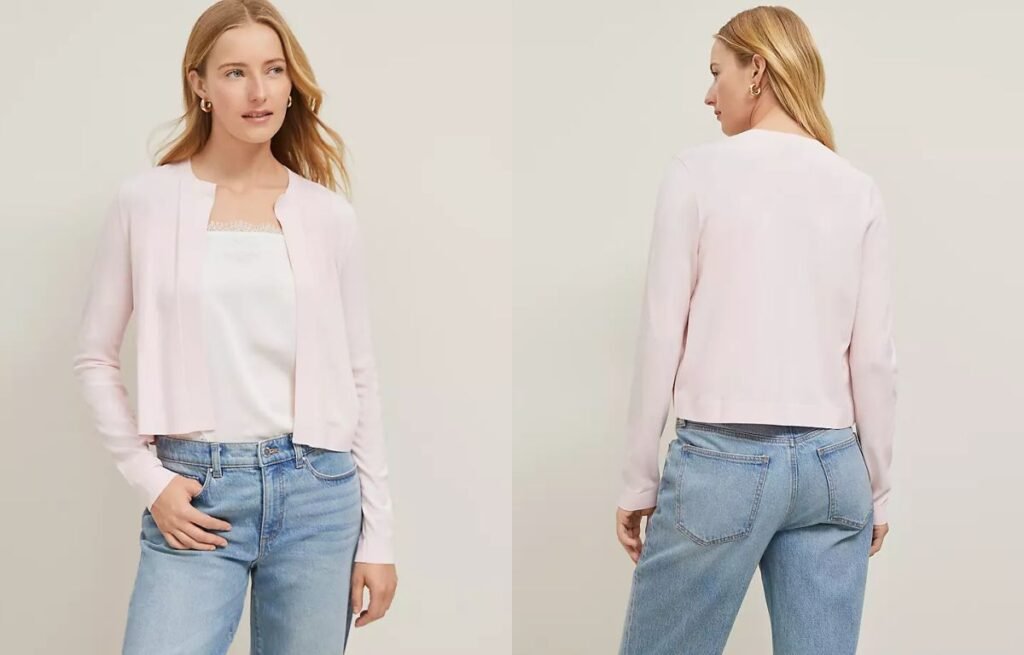
What Defines an Open-front Cardigan and Why Is It So Versatile?
The open-front cardigan is all about easy movement and relaxed layering. There are no buttons, zippers, or belts—just a smooth, flowing silhouette that goes with anything.
An open-front cardigan is designed to hang loosely at the front, giving a laid-back yet elegant look. Its simplicity makes it perfect for layering over dresses, tees, tanks, or blouses, working across all seasons and occasions.
The Popularity and Impact of Open-front Cardigans
Open-front cardigans became popular as the demand for comfort in fashion grew. Many women love the way these cardigans move with them, providing just enough warmth without restricting movement. Designers offer them in every fabric—from fine-gauge cotton to cozy chunky knits. You’ll find them in cropped, hip, or duster lengths, each with their own styling strengths.
| Feature | Open-front Cardigan | Why It Matters |
|---|---|---|
| No fasteners | Yes | Quick layering, easy on/off |
| Silhouette | Relaxed, flowing | Flattering for all body shapes |
| Length options | Cropped to longline | Style flexibility, mood changes |
| Fabric variety | High | Comfort for every season |
This is a piece you reach for when you want comfort, flexibility, and a bit of understated chic.
How Does the Open-front Cardigan Compare to Other Cardigan Styles?
Some people think a cardigan is just a cardigan, but style details really change its purpose and look.
Unlike buttoned or zipped cardigans, the open-front style creates a softer, more relaxed silhouette. It’s less structured and formal, making it a favorite for casual outfits, layering, and travel.
Open-front vs. Classic Cardigans
Open-front Cardigan
- Flows freely, never clings.
- Easiest to layer—goes over thick tops, dresses, or outerwear.
- Often features draped fronts, waterfall hems, or shawl collars for added visual interest.
- Can double as a light jacket in warmer seasons.
Classic Buttoned Cardigan
- More structure and polish; can be worn closed or open.
- Suited for work, school, or traditional office settings.
- Gives the wearer more control over fit and temperature.
Belted or Wrap Cardigan
- Includes a belt for cinching the waist.
- Adds shape and a bit of drama.
| Cardigan Type | Opening | Structure | Best For |
|---|---|---|---|
| Open-front | No closure | Relaxed | Casual, travel, layering |
| Buttoned/Zipped | With closure | Structured | Office, classic, layering |
| Belted/Wrap | Tie belt | Adjustable | Dressy, defining waist |
Open-front cardigans are perfect for anyone who wants a modern, easy look with zero hassle.
How Do Materials, Lengths, and Design Features Shape Open-front Cardigans?
Not all open-front cardigans are the same—fabric, length, and details decide whether they feel sporty, cozy, or elegant. I focus on these aspects when creating new collections.
Common materials include cotton for breathability, wool or acrylic for warmth, and viscose or blends for drape. Lengths range from cropped to duster, and design details like pockets, shawl collars, or textured knits change the mood and function.
Construction Choices and Their Impact
Materials
- Cotton: Cool and lightweight, ideal for spring and summer.
- Wool/Acrylic: Warm and cozy for fall and winter.
- Blends: Add softness, stretch, or sheen.
Lengths
- Cropped: Hits at the waist—perfect over dresses or high-rise pants.
- Hip-length: Most versatile, suits all shapes and styles.
- Duster/Longline: Dramatic, adds flow, perfect for layering over slim outfits or for travel.
Design Features
- Shawl Collar: Adds softness, elegance, and frames the face.
- Waterfall Front: Draped effect for extra movement.
- Pockets: Always practical for daily life.
- Textured Knit: Ribbing, cable, or open stitches for extra depth and style.
| Design Feature | Best For | Visual Impact |
|---|---|---|
| Shawl collar | Office, casual, layering | Soft, frames the face |
| Duster length | Travel, drama, comfort | Elongates the silhouette |
| Waterfall hem | Relaxed, trendy looks | Movement, texture |
| Pockets | Daily life, utility | Casual, handy |
Before launching any new style, I check for how it moves, washes, and layers—practicality is key.
How to Style Open-front Cardigans for Work, Home, and Trendy Outfits?
An open-front cardigan is more than a basic layer—it’s the secret weapon for every look. I see clients use them in creative ways year-round.
For work, layer a fine-gauge open-front cardigan over a blouse and tailored pants. For weekends, throw it over a tee with jeans or leggings. Use duster-length styles with dresses or as a lightweight travel jacket. Add scarves or belts for personality.
Real-life Styling Scenarios
Work
- Choose a slim, neutral open-front cardigan over a shirt or dress.
- Belt it for a more tailored silhouette.
- Pair with pointed flats or ankle boots for polish.
Home or Casual
- Wear a cozy, chunky knit over joggers and a basic tee.
- Add fuzzy socks for ultimate comfort.
- Try a cropped open-front style with a tank and shorts in summer.
Trendy or Statement Looks
- Pick bold colors or textured knits for street style.
- Layer a longline open-front cardigan over a slip dress, finished with boots or sneakers.
- Play with oversized, draped, or waterfall silhouettes for extra drama.
| Occasion | Cardigan Type | Styling Tip |
|---|---|---|
| Work | Fine-gauge, hip-length | Belted over blouse, with trousers |
| Casual | Chunky, mid-length | Over tee and jeans, relaxed accessories |
| Trendy | Duster, waterfall | Over dress, with boots or bold jewelry |
| Travel | Longline, pockets | With leggings, easy for on/off layering |
Open-front cardigans adapt to your needs—no matter your day or destination.
Cape Top
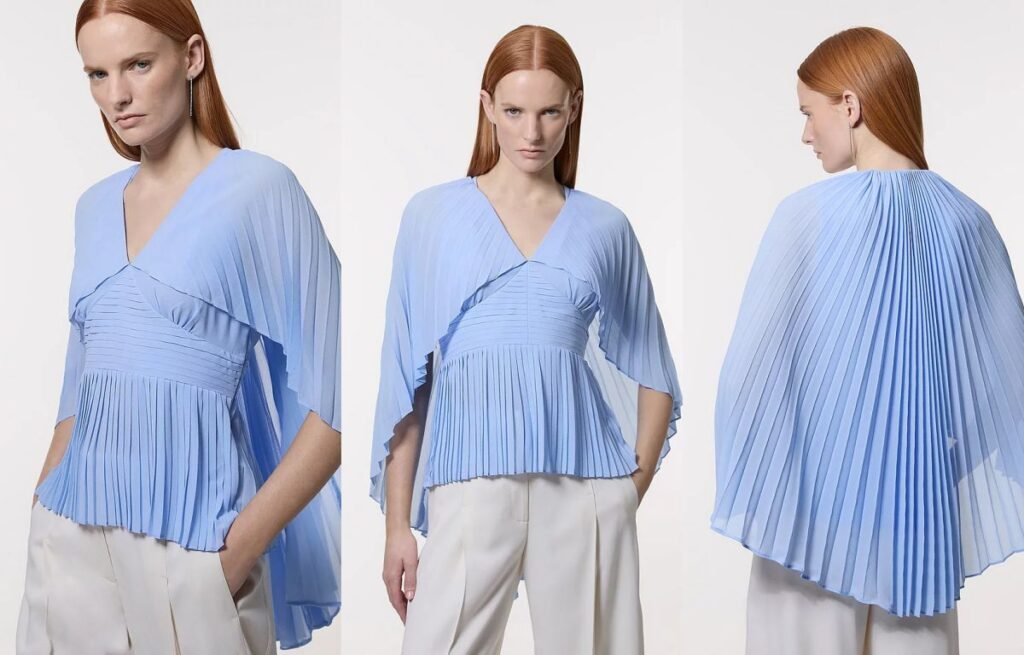
What Defines a Cape Top and What Makes It Stand Out?
The cape top is instantly recognizable. Unlike ordinary tops, it features extra fabric attached at the shoulders, draping over the arms or back like a cape. This detail creates movement, volume, and sophistication.
A cape top is a women’s top with an integrated cape-like overlay. It offers a dramatic, flowing silhouette that moves with you. It’s designed to stand out, turning a basic outfit into a true fashion statement.
The Impact and Evolution of Cape Tops
Cape tops are inspired by both historical and runway fashion. Designers love them for their theatrical edge, and I often see them in collections for both everyday and formal wear. Some have short, cropped capes for subtlety, while others use long, sweeping capes for maximum effect.
| Feature | Cape Top | Why It Matters |
|---|---|---|
| Silhouette | Draped, flowing | Adds drama, flatters movement |
| Coverage | Varies (shoulders, arms, back) | Elegant and functional |
| Length options | Short to long | Customizes the statement |
| Versatility | High | Suits many occasions |
Cape tops instantly set the wearer apart, whether styled for the office or an evening gala.
How Do Cape Tops Compare to Other Statement Tops?
Many women want to make a statement, but not every bold top works for every setting. Here’s where the cape top shines: it brings impact without sacrificing comfort or practicality.
Unlike peplum, off-shoulder, or ruffle tops, the cape top creates drama through movement and silhouette, not just surface detail. It is usually less restrictive, offering a mix of coverage and freedom that’s hard to find in other statement pieces.
Cape Tops vs. Other Bold Styles
Cape Top
- Movement-focused, with fabric that flows as you walk.
- Offers upper body coverage—good for both modest and daring looks.
- Can be layered over basics for added dimension.
Peplum Top
- Emphasizes the waist with a flared hem.
- Adds shape and a playful touch but less drama than a cape.
Off-Shoulder Top
- Highlights the shoulders and collarbones.
- Flirty and modern, but with less movement and coverage.
Ruffle Top
- Adds texture and volume with sewn-on ruffles.
- Fun and feminine, but not as striking as a cape silhouette.
| Statement Top | Key Feature | Best For | Level of Drama |
|---|---|---|---|
| Cape Top | Flowing overlay | Work, events, trend | High |
| Peplum Top | Flared hem | Work, daywear | Moderate |
| Off-Shoulder | Bare shoulders | Parties, date night | Moderate |
| Ruffle Top | Added volume | Everyday, events | Low to moderate |
Cape tops bridge the gap between standout style and wearable comfort.
How Do Materials, Shapes, and Design Details Influence the Cape Top?
The magic of a cape top is in the details. I always focus on material, cape length, and finish to create pieces that feel as good as they look.
Materials range from soft chiffons and silks for flow, to structured crepes or knits for more shape. Cape lengths can be short for a hint of drama or long for full glamour. Details like embellishments, prints, or tailoring define the overall vibe.
Construction Choices That Matter
Materials
- Chiffon, Silk, Satin: Flow beautifully, perfect for evening or special occasions.
- Crepe, Ponte, Knit: Hold their shape, ideal for structured, modern looks.
- Cotton or Jersey: Add comfort for casual styles.
Shapes & Lengths
- Short Cape: Covers shoulders; works well for the office or daytime.
- Elbow/Three-Quarter: Offers more coverage, moves with the arms.
- Full-Length: Sweeps behind for dramatic entrances.
Design Details
- Beading or Embroidery: For a formal or luxe touch.
- Bold Prints: Make the cape top the focus of any look.
- Tailored Seams: Give structure for a more fitted silhouette.
| Material | Effect | Best For |
|---|---|---|
| Chiffon/Silk | Fluid, airy | Evening, formal |
| Ponte/Knit | Structured, easy-care | Work, travel |
| Cotton/Jersey | Casual, soft | Everyday, relaxed |
| Embellished | Eye-catching | Parties, fashion events |
I always test cape tops for movement, drape, and how they handle washing and wear.
How Can Cape Tops Be Styled for Work, Events, and Trendy Looks?
Cape tops aren’t just for red carpets. I show my clients how to use them every day, from the boardroom to brunch to weddings.
For work, pair a short cape top with tailored pants or a pencil skirt. For events, go long and dramatic with sleek trousers or a fitted skirt. For casual, wear a jersey cape top over jeans or leggings. Accessories—belts, earrings, clutches—finish the look.
Styling Cape Tops for Real Life
Work
- Choose a structured, solid-color cape top.
- Wear with straight-leg trousers or a midi skirt.
- Add simple pumps and minimal jewelry.
Events
- Opt for a silk or embellished cape top with a long, flowing cape.
- Pair with slim-fit pants or a mermaid skirt.
- Finish with bold earrings and a sleek clutch.
Trendy or Casual
- Layer a printed jersey cape top over skinny jeans.
- Add boots or sneakers for a playful feel.
- Use a belt to define the waist if desired.
| Occasion | Cape Top Style | Styling Tip |
|---|---|---|
| Work | Short, tailored | With pencil skirt, minimal jewelry |
| Events | Long, embellished | With slim pants, statement clutch |
| Trendy | Printed, casual | Over jeans, with boots or sneakers |
| Seasonal | Layered or sleeveless | With camis or turtlenecks beneath |
Don’t be afraid to experiment—cape tops are meant to stand out and move with you.
Chiffon Blouse
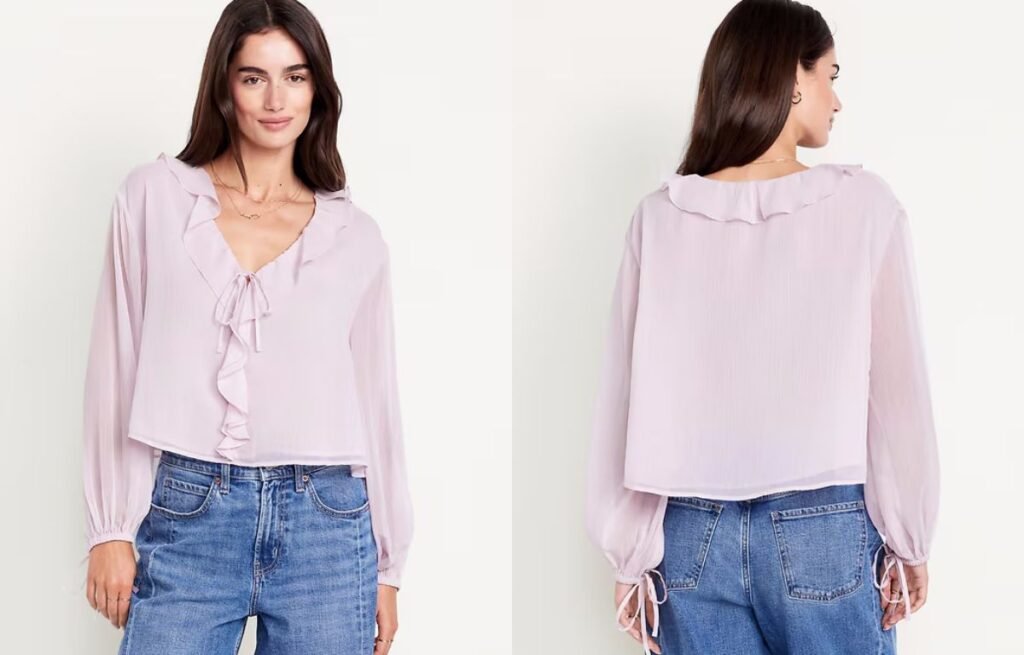
What Defines a Chiffon Blouse and Why Is It So Popular?
The magic of chiffon comes from its ultra-fine threads, which give the fabric its signature floaty look. Most chiffon blouses are loose-fitting, gently skimming the body, and feel cool against the skin.
A chiffon blouse is made from sheer, lightweight fabric that drapes beautifully and creates movement with every step. It’s known for breathability, easy layering, and a touch of romance—making it a favorite for modern women.
The Rise of the Chiffon Blouse in Fashion
Chiffon has roots in luxury, once made only from silk. Now, it’s also woven from polyester and nylon, making it more accessible. Blouses range from simple button-ups to tops with ruffles, ties, or pleats. Designers love it for its ability to take on color and print—soft pastels, bold florals, and everything in between.
| Feature | Chiffon Blouse | Why It Matters |
|---|---|---|
| Fabric | Sheer, lightweight | Comfort, breathability |
| Fit | Flowy, loose | Flattering for most shapes |
| Details | Ruffles, pleats, ties | Adds femininity, interest |
| Layering | Easy | Worn over camis, bralettes |
The result: a top that flatters, cools, and makes even a simple outfit feel special.
How Does the Chiffon Blouse Compare to Other Blouse Styles?
I get many questions about whether a chiffon blouse is really different from a cotton or silk blouse. The answer lies in the feel and function.
Chiffon blouses are softer, lighter, and more transparent than most other blouse fabrics. Unlike stiff cotton or shiny silk, chiffon adds movement and a soft-focus effect to any outfit—ideal for dressing up or down.
Comparing Chiffon to Other Fabrics
Chiffon vs. Cotton
- Chiffon: Sheer, drapey, quick-drying, holds color well, best for layering.
- Cotton: Opaque, crisp, absorbent, offers more structure, ideal for fitted looks.
Chiffon vs. Silk
- Chiffon: Matte or slightly shimmery, less prone to wrinkles, more affordable.
- Silk: Luxurious shine, delicate feel, higher price, more formal.
Chiffon vs. Polyester Blouse
- Chiffon: Airier, softer drape, more breathable.
- Polyester (not chiffon): Can be stiffer or heavier, less transparent.
| Blouse Type | Weight | Sheerness | Drape | Best For |
|---|---|---|---|---|
| Chiffon | Light | High | Fluid | Layering, events, work |
| Cotton | Medium | Low | Structured | Everyday, tailored |
| Silk | Light | Medium | Fluid | Luxury, formal |
| Polyester | Medium | Low | Varies | Easy-care, basics |
Chiffon stands out for its breathability, flow, and ability to elevate any look.
How Do Fabric Quality, Details, and Construction Affect the Chiffon Blouse?
I spend a lot of time testing different chiffons for weight, hand-feel, and durability. Not all chiffon blouses are created equal—details really matter.
High-quality chiffon is smooth, even, and soft—not scratchy. Well-made blouses have finished seams, reinforced stress points, and carefully placed trims. Details like ruffles, pleats, and ties make each blouse unique and influence how it hangs or moves.
Construction and Design Elements
Fabric Quality
- Silk chiffon: The softest, most luxurious—also the most delicate.
- Polyester chiffon: Affordable, wrinkle-resistant, comes in many colors.
- Nylon chiffon: Strong, holds shape well, less common.
Construction
- French seams or double-stitched edges prevent fraying and extend life.
- Lined yoke or body for added modesty.
- Bias cuts or gathered cuffs add shape and movement.
Design Details
- Ruffles/Pleats: Add volume and femininity, especially on sleeves or necklines.
- Ties/Bows: Bring focus to the collar or wrists.
- Prints/Embroidery: Transform the blouse into a statement piece.
| Quality/Detail | Effect on Blouse | Best Use |
|---|---|---|
| Silk Chiffon | Soft, luxurious | Special occasions |
| Poly Chiffon | Durable, easy care | Work, daily wear |
| French seams | Clean finish, strong | All chiffon blouses |
| Ruffles/Pleats | Feminine, adds flow | Dates, events, office |
| Prints/Embroidery | Unique, expressive | Trendy, seasonal pieces |
Choosing the right fabric and construction makes all the difference for comfort, durability, and style.
How to Style Chiffon Blouses for Work, Leisure, and Special Events?
A chiffon blouse is never boring. I see women style them in endless ways—from classic to creative. It’s all about how you layer and accessorize.
For work, tuck a solid chiffon blouse into tailored pants or a pencil skirt, and add a blazer. For weekends, wear a printed or ruffled chiffon blouse with jeans and flats. For evenings or events, pair a sheer blouse over a lace cami, with statement jewelry and heels.
Real-life Styling Ideas
Work
- Neutral or solid chiffon blouse with tailored bottoms.
- Add a structured blazer or cardigan for polish.
- Wear a camisole underneath for coverage.
Leisure
- Floral or patterned chiffon blouse, half-tucked into jeans or shorts.
- Light jewelry, espadrilles, or ballet flats for an effortless look.
Events
- Sheer chiffon blouse with lace or satin bralette.
- Pair with a flowing midi skirt or sleek trousers.
- Finish with bold earrings or a clutch.
Seasonal Layering
- Under sweaters or vests for fall.
- Over tanks or camis for spring/summer.
- Choose long sleeves for sun protection without extra weight.
| Occasion | Chiffon Blouse Type | Styling Tip |
|---|---|---|
| Work | Solid, minimal | With blazer and trousers |
| Casual | Printed, ruffled | With jeans, tucked or loose |
| Events | Sheer, embellished | Over camisole, with statement accessories |
| Seasonal | Long or short sleeve | Layer under/over other tops |
Chiffon’s flow and lightness always bring a soft, feminine edge to any outfit.
Silk Blouse
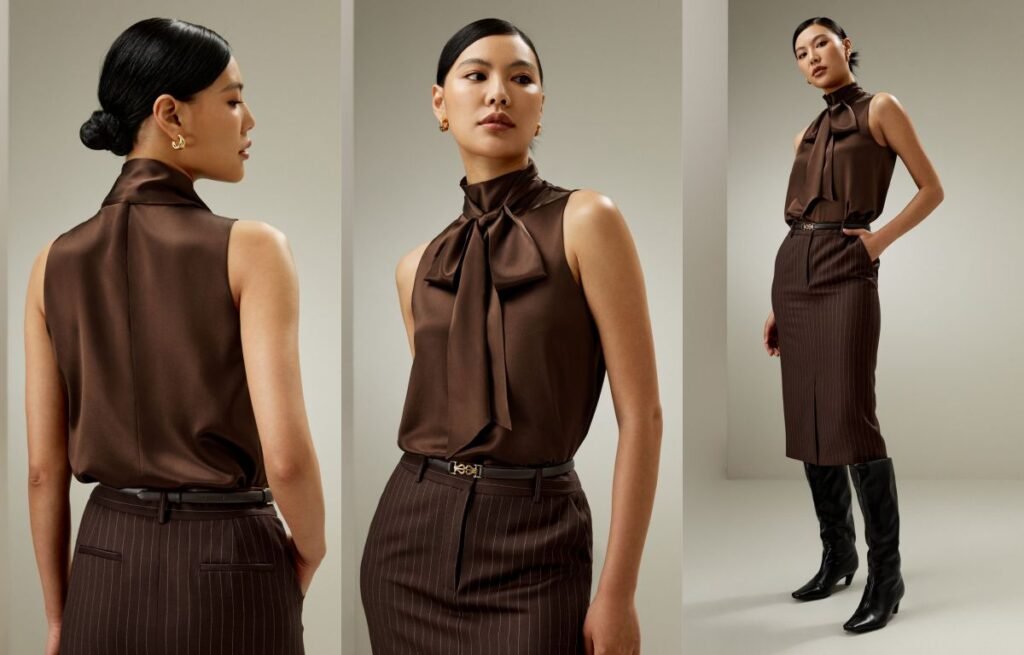
What Defines a Silk Blouse and Why Do Women Love It?
Silk has always been the fabric of royalty, but today, anyone can enjoy its benefits. I see silk blouses worn everywhere from the office to brunch. It’s the piece my clients save for their “important” days.
A silk blouse is a top crafted from natural silk threads, giving it a smooth, lustrous surface and a lightweight drape. It offers comfort, elegance, and versatility—perfect for elevating any outfit.
The Allure and History of the Silk Blouse
Silk was first woven in China thousands of years ago, and it’s still considered the gold standard for luxury fabrics. Modern silk blouses range from minimalist button-downs to dramatic tie-neck styles or soft, romantic wraps. Silk’s lightness allows blouses to float over the skin, creating a feminine, flattering line.
| Feature | Silk Blouse | Why It Matters |
|---|---|---|
| Fabric | 100% silk (mulberry, etc.) | Supreme softness, drape |
| Sheen | Subtle, natural glow | Instantly elevates outfits |
| Breathability | High | Comfortable in any season |
| Style Range | Wide (classic to trendy) | Suits all personal styles |
Women love silk blouses for their ability to transform even the simplest jeans or suits.
How Does the Silk Blouse Compare to Other Blouse Fabrics?
Clients often ask if silk is really “better” than cotton, polyester, or chiffon. The answer depends on priorities—luxury, practicality, or ease of care.
Silk blouses feel softer and cooler than cotton, offer more breathability than polyester, and look shinier than chiffon. Silk is delicate and may require hand-washing, but it provides comfort and a rich, elegant appearance unmatched by other fibers.
Silk vs. the Rest
Silk vs. Cotton
- Silk: Smoother, glossier, more fluid. Better for dressing up, naturally hypoallergenic.
- Cotton: Matte finish, crisp, holds shape. Easier to care for, perfect for casual.
Silk vs. Polyester
- Silk: Natural fiber, cool and breathable, eco-friendly.
- Polyester: Synthetic, often less breathable, very wrinkle-resistant and affordable.
Silk vs. Chiffon
- Silk: Rich, opaque or semi-sheer, soft and warm to the touch.
- Chiffon: Lighter, more sheer, often synthetic, with less drape and less shine.
| Blouse Fabric | Feel | Sheen | Breathability | Care | Best For |
|---|---|---|---|---|---|
| Silk | Ultra-soft | Natural | Excellent | Hand-wash/dry clean | Office, events |
| Cotton | Crisp | Matte | Good | Easy/machine wash | Everyday, casual |
| Polyester | Smooth | High/low | Moderate | Machine wash | Budget, travel |
| Chiffon | Airy | Low/matte | Good | Gentle wash | Romantic, layering |
Silk’s unique feel and luster make it the fabric of choice for special blouses.
How Do Silk Types, Weaves, and Details Affect a Blouse’s Look and Feel?
Not all silk blouses are alike. As a designer, I spend time choosing between different silk types (like crepe, charmeuse, or georgette) and special details to match every occasion.
Silk types like crepe or satin change the blouse’s shine and texture. Weaves and finishes (matte, glossy, crinkled) impact drape and feel. Details—pleats, ties, embroidery, or mother-of-pearl buttons—add personality and set luxury blouses apart.
Silk Construction and Finishing Touches
Types of Silk
- Charmeuse: Glossy, fluid, great for draped or bias-cut blouses.
- Crepe de Chine: Slightly matte, crisp but soft, perfect for tailored styles.
- Georgette: Lightweight, slightly sheer, with a pebbled texture.
- Satin Silk: Highly lustrous, used for evening and special occasion blouses.
Design Details
- French seams: For a smooth, polished interior.
- Delicate buttons: Mother-of-pearl or covered in silk.
- Tie-neck or pussy-bow: Adds retro or feminine touch.
- Cuffs and Collars: Contrast or soft, unstructured.
Prints and Colors
Silk takes dye beautifully, so colors are always rich and true. I often select jewel tones, soft pastels, or bold prints to suit the season.
| Silk Type | Shine | Weight | Best Use |
|---|---|---|---|
| Charmeuse | High | Light | Flowy, elegant blouses |
| Crepe de Chine | Matte | Light/Med | Structured, office wear |
| Georgette | Low | Very light | Sheer, layered styles |
| Satin | High | Medium | Formal, evening blouses |
The quality of silk and thoughtful details separate a basic top from a true luxury piece.
How to Style Silk Blouses for Every Occasion?
The silk blouse works for more situations than almost any other top I know. My clients wear them to work, on weekends, and to formal events—just by changing bottoms and accessories.
For work, pair a silk blouse with tailored pants or a pencil skirt. For casual days, tuck it into jeans and add a leather belt. For nights out or events, choose a bold color or print, and accessorize with statement earrings and heels.
Silk Blouse Styling Inspiration
Work
- Solid silk button-down with black trousers or a midi skirt.
- Add a blazer or cardigan for structure.
- Neutral tones like ivory, navy, or blush are classic.
Casual
- Relaxed-fit silk blouse, loosely tucked into straight-leg jeans.
- Roll up the sleeves, add loafers or ballet flats.
Events
- Silk blouse in jewel tones or with subtle prints.
- Wear with a slip skirt, tailored pants, or under a suit.
- Choose gold jewelry or pearls for extra elegance.
Layering
- Under sweaters or cardigans for warmth and a peek of shine.
- Over a camisole for more coverage if sheer.
| Occasion | Silk Blouse Type | Styling Tip |
|---|---|---|
| Work | Classic, solid | With blazer, tuck in for polish |
| Casual | Relaxed, print | With jeans, sleeves rolled |
| Event | Bold color, draped | With statement jewelry, heels |
| Layering | Sheer, light | Under knits, over camis |
The silk blouse adapts to every mood and setting—always making you look and feel special.
Satin Shirt
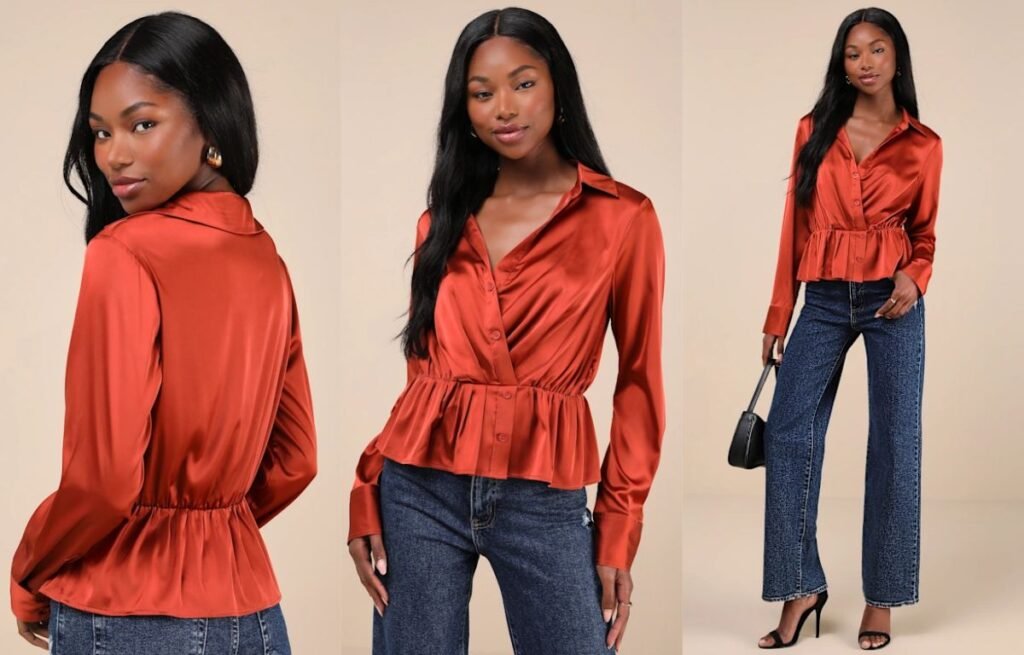
What Defines a Satin Shirt and What Sets It Apart?
The first thing people notice about a satin shirt is the shine—it catches the light and brings depth to any color. Satin shirts often feature classic details like collars, cuffs, and buttons, but the fabric gives them a modern, elevated feel.
A satin shirt is made from satin-woven fabric—usually polyester, silk, or acetate—offering a sleek, lustrous surface. It drapes beautifully, feels cool on the skin, and instantly upgrades any outfit.
The Satin Shirt’s Signature Appeal
Satin has roots in luxury, but new weaving techniques and synthetic fibers make it accessible to all. Satin shirts can be fitted or relaxed, with classic or oversized silhouettes. What makes satin unique is its ability to reflect light, adding dimension and depth to solid colors and prints.
| Feature | Satin Shirt | Why It Matters |
|---|---|---|
| Fabric | Satin weave | Shine, smooth touch |
| Drape | Fluid, flowy | Flatters every body shape |
| Color vibrance | High | Makes even neutrals pop |
| Versatility | Day to night wear | Fits all style needs |
A satin shirt always stands out, whether worn solo or layered.
How Does the Satin Shirt Compare to Other Dress Shirts?
Many people ask if they should choose satin or stick with cotton, silk, or polyester shirts. The answer depends on the look and feel you want.
Satin shirts offer more shine and a silkier touch than cotton or linen shirts. They are smoother than most polyester and hold color better than natural fibers. Compared to silk shirts, satin is often more affordable and less delicate, making it great for both daily and occasion wear.
Satin vs. Other Shirt Fabrics
Satin vs. Cotton
- Satin: Glossy, soft, drapes well, dressy.
- Cotton: Matte, crisp, breathable, casual or business.
Satin vs. Silk
- Satin: Can be made from silk, but most are polyester for easy care.
- Silk shirt: Always natural, very soft, delicate, and high-end.
Satin vs. Polyester
- Satin: Refers to the weave, not just the fiber—polyester satin is common, with high shine and easy care.
- Polyester shirt: Usually matte, less fluid, and less luxurious in look and feel.
| Shirt Type | Surface | Drape | Shine | Care | Best For |
|---|---|---|---|---|---|
| Satin | Glossy | Fluid | High | Hand/machine | Day, night, events |
| Cotton | Matte | Crisp | Low | Easy/machine | Everyday, business |
| Silk | Subtle | Soft | Medium | Hand-wash | Luxury, formal |
| Linen | Matte | Relaxed | None | Gentle wash | Summer, casual |
The satin shirt fills the gap between work and evening, always adding sophistication.
How Do Fabric Quality, Construction, and Details Influence Satin Shirts?
Not all satin shirts are created equal. As a designer, I always pay attention to the weave, fiber content, and finishing. These small choices decide how the shirt feels, wears, and lasts.
High-quality satin is smooth, tightly woven, and doesn’t snag easily. Well-made satin shirts have clean seams, reinforced stress points, and subtle details like covered buttons or soft linings. Fabric weight, fiber (polyester, silk, acetate), and shine level affect drape, comfort, and longevity.
The Science and Craft of Satin Shirts
Fiber Content
- Polyester Satin: Durable, affordable, easy care, very shiny.
- Silk Satin: Natural, luxe, slightly more muted shine, more delicate.
- Acetate Satin: Soft, often used for lining, not as durable.
Weave & Weight
- Dense Weave: More durable, less transparent.
- Lightweight Satin: More flow, but can wrinkle or show lines underneath.
- Heavy Satin: Drapes like liquid, feels substantial and elegant.
Details
- Buttons: Covered in satin for a seamless look.
- Cuffs and Collars: Crisp or soft, often with subtle piping.
- Hemlines: Straight for a classic look, curved for a softer effect.
| Satin Feature | Impact | Best For |
|---|---|---|
| Dense weave | Durability, rich look | Work, events, travel |
| Lightweight | Breathability, flow | Summer, layering |
| Silk content | Luxe feel, softer drape | Formal occasions |
| Covered buttons | Seamless elegance | Special events, evening |
I always test satin shirts for pilling, snagging, and how they wash before recommending them to clients.
How to Style Satin Shirts for Work, Leisure, and Night Out?
The satin shirt isn’t just for parties. I help clients see how easy it is to dress up or down, depending on how you pair it and what you layer over or under.
For work, tuck a neutral satin shirt into tailored trousers or a pencil skirt. For weekends, wear it loose with jeans and simple flats. For night out, pick bold colors or prints, unbutton the collar, and add statement earrings and heels.
Real-World Satin Shirt Styling
Work
- Classic satin shirt in navy, cream, or black.
- Pair with a blazer and tailored pants.
- Add a silk scarf for a chic accent.
Casual
- Relaxed-fit satin shirt, half-tucked into straight-leg jeans.
- Roll sleeves for a laid-back vibe.
- Layer with a tank top underneath for contrast.
Night Out
- Bold or jewel-toned satin shirt, maybe with a touch of shimmer.
- Style with leather pants or a satin skirt.
- Finish with metallic heels and bold jewelry.
Layering and Accessories
- Use open over a tank as a lightweight jacket.
- Add delicate necklaces to highlight the neckline.
- Cuff the sleeves or tie at the waist for a modern touch.
| Occasion | Satin Shirt Style | Styling Tip |
|---|---|---|
| Work | Classic, neutral | With blazer, tucked, with scarf |
| Casual | Relaxed, pastel/print | With jeans, untucked, rolled sleeves |
| Night Out | Bold, shiny | With heels, statement accessories |
| Layering | Open, soft drape | Over camisole, with jewelry |
The versatility of the satin shirt makes it easy to wear in every setting, year-round.
Striped Shirt
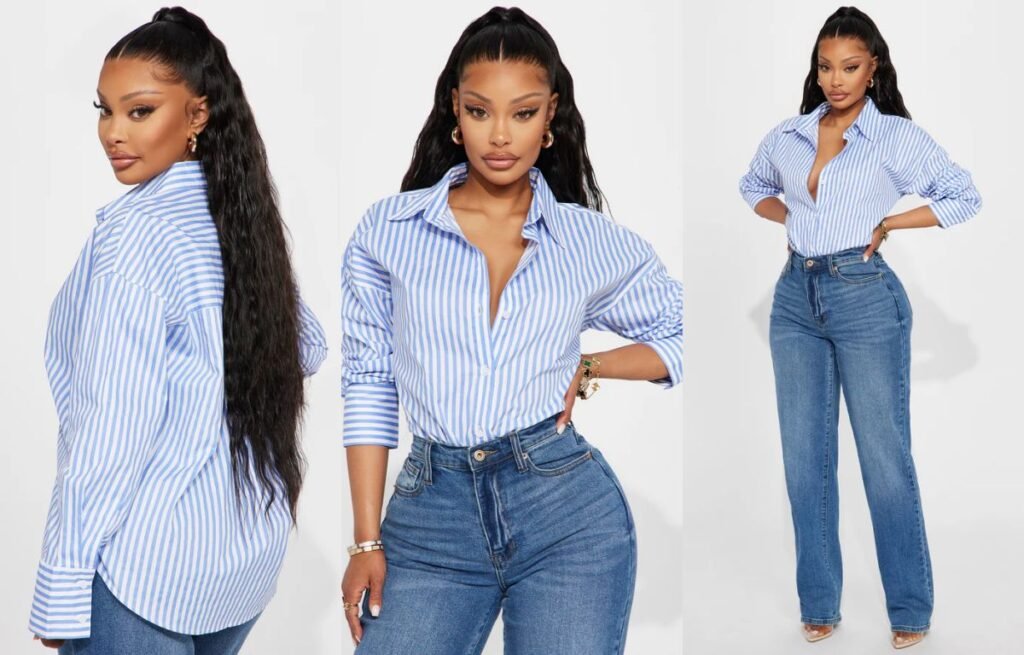
What Defines a Striped Shirt and Why Is It So Versatile?
A striped shirt can be as simple as a classic oxford or as bold as a multicolor poplin. The power of stripes lies in their ability to flatter and add character with minimal effort.
A striped shirt is any blouse, button-up, or tee that uses stripes—vertical, horizontal, or diagonal—as its main design. The effect is clean, modern, and always eye-catching, making it easy to match with basics or statement pieces.
The Universal Appeal of Stripes
Stripes date back to nautical uniforms and French workwear. Today, designers use them to create fresh, adaptable tops for all ages. Vertical stripes can elongate the body, while horizontal stripes add playfulness or boldness. I see striped shirts in every collection, from luxury to high street, because they never go out of style.
| Feature | Striped Shirt | Why It Matters |
|---|---|---|
| Stripe direction | Vertical, horizontal, diagonal | Changes body shape effect |
| Color palette | Classic or bold | Works for every taste |
| Fabric choices | Cotton, silk, linen | Year-round comfort |
| Fit options | Relaxed to tailored | Suits all body types |
Stripes are the rare print that looks as good in a meeting as on vacation.
How Do Stripe Patterns, Colors, and Fits Influence the Shirt’s Impact?
The impact of a striped shirt changes with every design choice. I pay close attention to stripe width, direction, and color when designing for my clients.
Narrow vertical stripes make you look taller and slimmer, while wider stripes or bold colors create statement looks. Horizontal stripes feel playful and can balance out body proportions. Fit—from boxy to fitted—also shapes the mood and versatility.
The Art of Stripe Selection
Stripe Patterns
- Vertical stripes: Elongate the figure, formal, classic.
- Horizontal stripes: Casual, relaxed, add width.
- Diagonal stripes: Trendy, creative, dynamic effect.
Stripe Width & Color
- Narrow stripes: Subtle, office-friendly.
- Wide stripes: Modern, bold, draw attention.
- High-contrast colors: Make stripes stand out, add energy.
- Tonal or pastel stripes: Softer, easier to mix and match.
Fit
- Tailored: Clean, professional, perfect for work.
- Relaxed or oversized: Easygoing, trendy, great for layering.
| Stripe Style | Visual Effect | Best Use |
|---|---|---|
| Vertical/narrow | Slimming, elegant | Office, formal, tall look |
| Vertical/wide | Bold, high-impact | Trendy, street style |
| Horizontal | Casual, adds width | Weekend, nautical looks |
| Diagonal | Unique, modern | Fashion-forward outfits |
Choosing the right stripe and fit can flatter any body shape and fit any occasion.
How Does the Striped Shirt Compare to Solid and Printed Tops?
Clients often ask if stripes are too bold or hard to style compared to solids or florals. My answer: stripes are actually the most adaptable print there is.
Striped shirts strike a balance between plain basics and busy prints. They’re more interesting than solids but easier to mix and match than florals or graphics. Stripes are always in style, and they never overpower an outfit.
Stripes vs. Solids vs. Prints
Stripes vs. Solids
- Stripes: Add structure, movement, and visual interest. Perfect for building a wardrobe with personality.
- Solids: Safe, classic, always appropriate. Easier to accessorize but can feel basic.
Stripes vs. Prints
- Stripes: Clean, geometric, universally flattering.
- Prints (floral, animal, etc.): More expressive, sometimes tricky to pair or can date quickly.
| Top Type | Visual Impact | Versatility | Timelessness |
|---|---|---|---|
| Striped | Medium/High | High | Always trendy |
| Solid | Low | Highest | Classic staple |
| High | Moderate | Trend-driven |
Stripes are a great “entry-level” print for anyone nervous about bold patterns.
How to Style Striped Shirts for Work, Casual, and Creative Looks?
A striped shirt adapts to any mood or schedule. I always share with clients how easy it is to dress stripes up or down, just by switching bottoms and accessories.
For work, pair a tailored striped shirt with slacks or a pencil skirt. For casual days, wear an oversized striped shirt with jeans or shorts. For a creative vibe, mix stripes with other prints or bold jewelry for maximum effect.
Practical Styling for Real Life
Work
- Blue or black striped button-up tucked into tailored pants.
- Add a blazer and loafers for instant polish.
Casual
- Relaxed, oversized striped shirt over skinny jeans or denim shorts.
- Leave untucked, roll up the sleeves, and add sneakers or flats.
Creative
- Try a striped shirt with floral or polka dot bottoms—keep one print subtle.
- Add a statement necklace or scarf to highlight the neckline.
- Play with color-blocked or mixed-direction stripe designs.
Layering and Accessories
- Layer under a sweater or cardigan for fall.
- Use a striped tee as a base for a bold jacket or vest.
- Pair with gold hoops, silk scarves, or a leather belt for French-girl style.
| Occasion | Striped Shirt Type | Styling Tip |
|---|---|---|
| Work | Tailored, narrow stripes | Tucked, with blazer |
| Casual | Oversized, soft fabric | Untucked, with jeans or shorts |
| Creative | Mixed-stripe, bold color | With prints, statement accessories |
| Transitional | Layered | Under sweater or vest |
Stripes offer endless styling options—you can never run out of new looks.
Denim Shirt
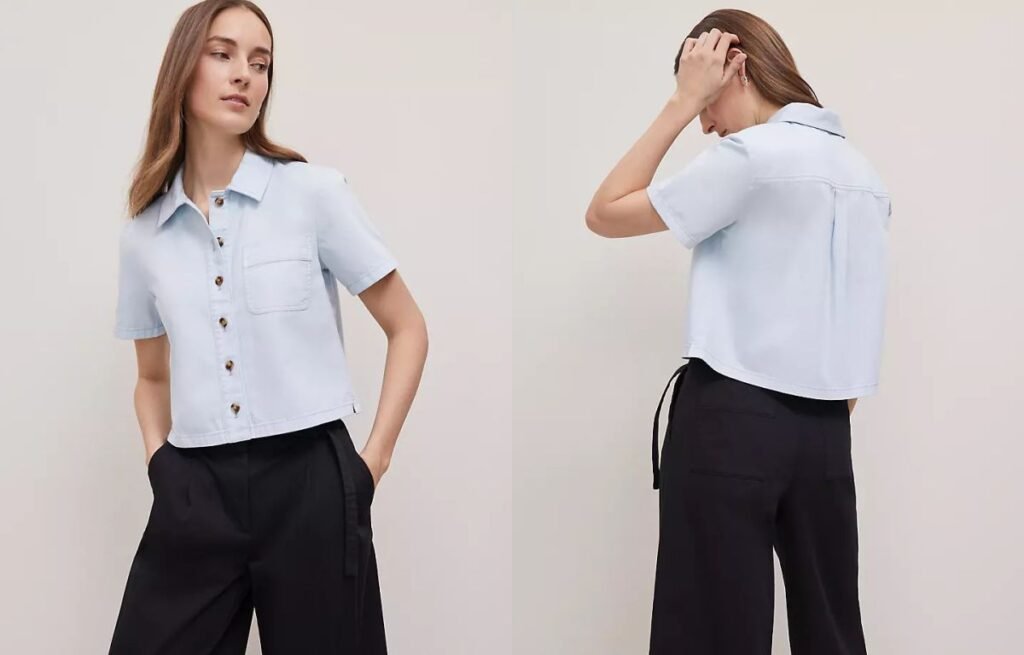
What Defines a Denim Shirt and Why Is It So Versatile?
Denim shirts are easy to spot—classic blue, sturdy texture, and usually finished with metal snaps or buttons. The real secret is their ability to dress up or down, adapting to almost any look.
A denim shirt is crafted from woven denim—a tough, medium- to heavyweight cotton. It’s known for durability, casual appeal, and endless versatility. Wear it alone, open over a tee, or layered under jackets for an effortlessly cool vibe.
The Enduring Power of Denim Shirts
Denim shirts started as workwear but quickly became a style staple thanks to their practicality. Today, I see them in light to dark washes, cropped or oversized, fitted or relaxed. The variety means every woman can find her perfect fit.
| Feature | Denim Shirt | Why It Matters |
|---|---|---|
| Fabric | Woven denim, cotton | Long-lasting, comfortable |
| Construction | Button-up, pockets, yoke | Structure and utility |
| Wash | Light, dark, faded, black | Matches all seasons, moods |
| Fit | Relaxed, tailored, oversized | Flatters all shapes |
The denim shirt is a classic with true staying power.
How Does the Denim Shirt Compare to Other Casual Shirts?
Clients often ask if a denim shirt is really better than a flannel, chambray, or basic cotton button-up. The answer is in texture, versatility, and attitude.
Denim shirts are heavier and more rugged than cotton or chambray shirts. Unlike flannel, denim works in all seasons and is less prone to wrinkling. Its iconic look bridges the gap between casual and cool, while still layering easily.
Denim vs. Other Shirt Fabrics
Denim vs. Chambray
- Denim: Twill weave, heavier, textured, usually indigo-dyed.
- Chambray: Plain weave, lighter, softer, looks similar but feels more like a dress shirt.
Denim vs. Flannel
- Denim: Strong, structured, less heat-trapping.
- Flannel: Brushed, warm, best for fall/winter.
Denim vs. Basic Cotton
- Denim: Built to last, holds its shape, gets better with age.
- Cotton shirt: Softer, lighter, more formal.
| Shirt Type | Weight | Best For | Visual Effect |
|---|---|---|---|
| Denim | Medium | Year-round, layers | Cool, casual |
| Chambray | Light | Summer, layering | Soft, refined |
| Flannel | Medium | Cold weather | Warm, rugged |
| Cotton | Light | Office, summer | Crisp, classic |
Denim’s versatility puts it at the top of the casual shirt list.
How Do Fabric, Washes, and Design Details Impact the Denim Shirt?
The right denim shirt feels personal—because fabric, color, and details all shape its personality. I spend time picking the perfect weight and wash for every season.
Denim shirts come in a range of washes (light, medium, dark, black, faded, distressed), each with a different mood. Details like pearl snaps, contrast stitching, patch or flap pockets, and curved or raw hems influence the style and function.
Construction Choices for Every Woman
Fabric & Weight
- Lightweight denim: Easy to tuck or layer, great for summer.
- Midweight/Heavy: Warmer, more structured, ideal for jackets or overshirts.
Washes
- Light wash: Soft, relaxed, perfect for spring/summer.
- Dark wash: Polished, can go from casual to smart.
- Distressed: Edgy, youthful, pairs with modern street style.
- Black/colored: Urban, versatile, a fresh update to blue denim.
Design Details
- Snaps vs. buttons: Snaps add Western flair; buttons keep it classic.
- Chest pockets: Single or double, for style and storage.
- Embroidery or patches: Add personality.
- Fit: Oversized for layering, fitted for a more feminine silhouette.
| Feature | Impact | Best Use |
|---|---|---|
| Lightweight | Easy layering, cool | Summer, under jackets |
| Heavyweight | Standalone, warm | Fall, as light jacket |
| Light wash | Relaxed, casual | Daytime, weekends |
| Dark wash | Sharp, elevated | Work, evening, layering |
| Embellished | Personal, trendy | Festival, street style |
Testing for colorfastness and softness is key—good denim only gets better with wear.
How to Style Denim Shirts for Every Season and Occasion?
A denim shirt isn’t just for jeans. I show clients how to make it work for work, weekends, travel, or even a night out.
Wear buttoned and tucked into a skirt for a polished look, or open over a tee and leggings for casual days. Pair with black pants for contrast, or double up with jeans (“denim on denim”) for a bold statement. Add boots, sneakers, or heels—anything goes.
Real-world Styling Solutions
Work
- Fitted denim shirt, buttoned up, with tailored black trousers or a pencil skirt.
- Add a statement necklace or a silk scarf.
Casual
- Oversized denim shirt as a shacket (shirt-jacket) over a tee and leggings.
- Half-tucked into white or black jeans with sneakers.
Dressy/Trendy
- Tie at the waist over a slip dress.
- Layer under a blazer for unexpected texture.
Transitional/Seasonal
- Roll up the sleeves in spring.
- Layer under a chunky knit in fall or winter.
| Occasion | Denim Shirt Style | Styling Tip |
|---|---|---|
| Work | Fitted, dark wash | Tucked, with skirt/trousers |
| Casual | Oversized, faded | Open, with tee/leggings/jeans |
| Trendy | Distressed, light wash | With dress, knotted, or as jacket |
| All-year | Any | Layered, sleeves rolled or down |
Denim shirts transition across seasons and dress codes—there are no limits.
Printed Shirt
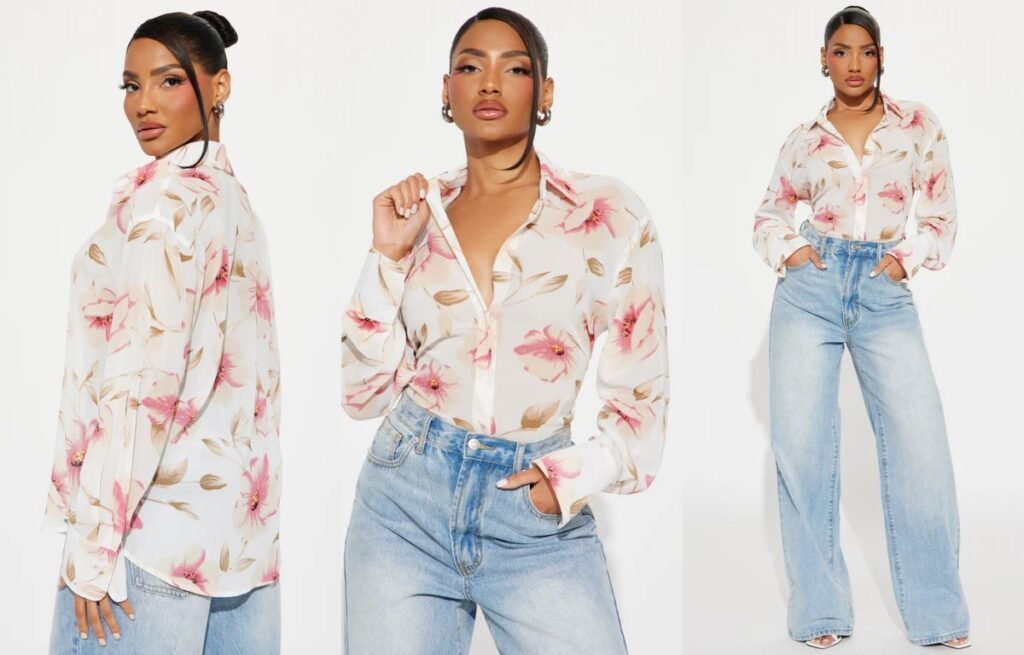
What Defines a Printed Shirt and Why Is It So Popular?
Printed shirts have been around for decades, but their ability to evolve keeps them fresh. Designers and brands use prints to tell a story, set trends, and celebrate culture. No two printed shirts are ever truly the same.
A printed shirt is any top decorated with repeating or placement patterns—like florals, polka dots, abstracts, animal motifs, or logos. The print can be subtle or bold, casual or formal, but always adds visual interest and energy.
Why Prints Endure in Fashion
Printed shirts range from soft pastels to vivid, statement designs. Techniques include screen printing, digital printing, block printing, and sublimation. Each method brings its own feel—digital prints offer high detail and endless colors, while hand-block prints deliver artisanal charm.
| Feature | Printed Shirt | Why It Matters |
|---|---|---|
| Print Type | Florals, geometrics, animals | Expresses mood and personality |
| Fabric | Cotton, silk, blends, synthetics | Adapts to all seasons |
| Technique | Screen, digital, block, dye | Affects cost, detail, longevity |
| Occasion | Everyday to events | Truly versatile |
Printed shirts can be wardrobe stars or quiet supporters—it’s all about the design.
How Do Print Types, Colors, and Scales Influence the Look?
Choosing the right print is more than picking a pretty pattern. I guide my clients to focus on color, motif size, and how prints pair with other clothes in their wardrobe.
Large prints (big florals, bold graphics) make a statement and draw attention. Small prints are subtler and often more versatile. Color plays a key role: high-contrast or bright colors feel energetic, while tonal prints look sophisticated and easier to style.
Understanding Prints in Fashion
Print Types
- Florals: Feminine, classic, or boho, depending on color and scale.
- Geometric: Modern, sharp, sometimes retro.
- Animal: Edgy, playful, often used for trendy or statement looks.
- Abstract: Artistic, creative, for those who want to stand out.
- Logo or Placement Prints: Brand-focused, bold, or sporty.
Print Scale
- Large-scale: Draws the eye, best for simple bottoms or accessories.
- Small-scale: Feels delicate, easy to layer, good for petite frames.
Color Palette
- High contrast: Black and white, brights—attention grabbing.
- Tonal or pastel: Soft, romantic, blends well with basics.
| Print Style | Mood/Effect | Styling Suggestions |
|---|---|---|
| Floral (big) | Bold, feminine | With simple bottoms |
| Floral (small) | Soft, romantic | Under a blazer or knit |
| Animal print | Edgy, confident | With black, leather, or denim |
| Geometric | Modern, clean | Mixed with solid colors |
| Abstract | Artistic, unique | With minimalist accessories |
Mixing prints can work, but I always recommend balancing colors and keeping one print subtle.
How Does the Printed Shirt Compare to Solid and Striped Shirts?
Clients often worry that prints will go out of style or be hard to match. My experience shows the opposite: prints adapt with trends, and there’s a print for every mood or era.
Printed shirts are more expressive than solids and more playful than stripes. Solids are easy and timeless, but can lack energy. Stripes are classic and slim the body, but prints break the mold, offering creative freedom and trend-setting style.
Print vs. Solid vs. Stripe
Printed Shirts
- Stand out, show personality, follow seasonal trends.
- Can be bold or understated, depending on print.
Solid Shirts
- Safe, easy to accessorize, professional.
- Less likely to date, but sometimes lack character.
Striped Shirts
- Classic, universally flattering, easy to layer.
- Always in style, but less expressive than prints.
| Shirt Type | Visual Impact | Versatility | Trendiness |
|---|---|---|---|
| Printed | High | High | Trend-driven |
| Solid | Low | Highest | Timeless |
| Striped | Medium | High | Classic |
The best wardrobes mix all three for the greatest flexibility.
How to Style Printed Shirts for Work, Play, and Events?
Printed shirts shine when styled right. I teach clients to start with the shirt, then build the outfit around its mood.
For work, pair a small-print or tonal shirt with neutral trousers or skirts. For weekends, wear a bold floral or animal print with jeans or shorts. For events, choose a statement print and accessorize with jewelry or a structured bag.
Styling Advice for Real Women
Work
- Subtle geometric or micro-print shirt, tucked into a pencil skirt or high-waist pants.
- Add a neutral blazer for balance.
- Minimal accessories keep the look professional.
Play
- Oversized floral or graphic print shirt over skinny jeans or shorts.
- Leave untucked, sleeves rolled, with sneakers or sandals.
- Add fun earrings or a crossbody bag.
Events
- Statement print shirt with tailored trousers or a sleek midi skirt.
- Add bold jewelry, heels, and a clutch for maximum impact.
Layering
- Printed shirts work well under cardigans, jackets, or even dresses.
- Mix with a striped or solid scarf for interest.
| Occasion | Printed Shirt Type | Styling Tip |
|---|---|---|
| Work | Small/tonal print | With tailored basics, minimal jewelry |
| Casual | Bold, colorful print | Untucked, with jeans or shorts |
| Event | Large, artistic print | With dressy bottoms, statement jewelry |
| Layering | Any | Under sweaters or blazers |
The print is always the hero—let it lead the rest of your look.
Peplum Shirt
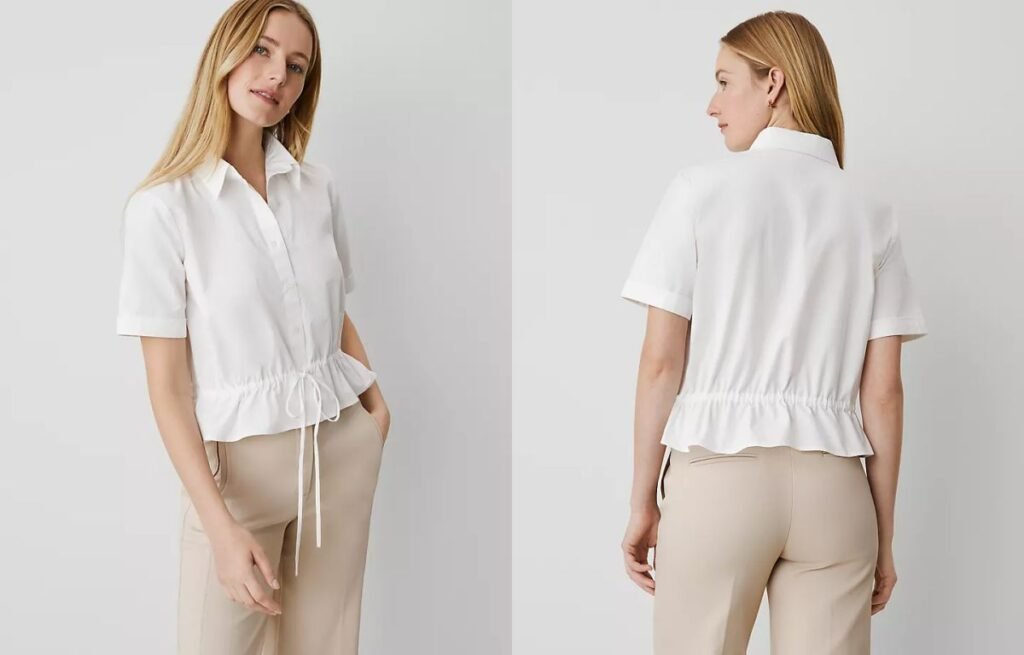
What Defines a Peplum Shirt and Why Is It Flattering?
The magic of the peplum is in its structure. By adding extra fabric at the waist, a peplum shirt creates curves, adds volume, and draws the eye to the narrowest part of your torso.
A peplum shirt features a close-fitting top half and a ruffled or flared fabric at the waistline. This design helps define the waist and balances the body, making it flattering for almost every figure.
The Timeless Appeal of Peplum
Peplum comes from Greek and Roman fashion, but its biggest fashion moment was the 1940s and 1980s. Today, it’s updated with softer fabrics and more subtle flares. The peplum gives instant hourglass shape—whether you have curves or want to create the illusion of them.
| Feature | Peplum Shirt | Why It Matters |
|---|---|---|
| Flared hem | Adds movement, flatters waist | Feminine, shape-enhancing |
| Bodice fit | Structured or stretchy | Can suit all body types |
| Versatility | From work to evening | Widely wearable |
A peplum top feels special, but it’s just as easy to wear as a tee or blouse.
How Does the Peplum Shirt Compare to Other Shirt Styles?
Some women worry peplum is too “dressy” or hard to style. Actually, it’s one of the easiest ways to make an outfit look finished, compared to plain blouses or button-ups.
Peplum shirts add shape and movement, unlike straight-cut shirts or boxy tops. They’re more polished than a basic tee, more forgiving than a fitted blouse, and more fashion-forward than a classic button-up.
Peplum vs. Other Silhouettes
Peplum vs. Classic Blouse
- Peplum: Defines the waist, hides the tummy, playful movement.
- Classic Blouse: Clean lines, versatile, but doesn’t create as much shape.
Peplum vs. Fitted Shirt
- Peplum: Adds volume at the hips, balances the bust and shoulders.
- Fitted Shirt: Follows the body’s natural line, less dramatic.
Peplum vs. Boxy or Oversized Tops
- Peplum: Creates curves, feminine, formal or semi-formal.
- Boxy: Straight shape, relaxed, casual vibe.
| Shirt Type | Silhouette | Best For | Effect |
|---|---|---|---|
| Peplum | Flared waist | All body types, events | Feminine, structured |
| Classic Blouse | Straight | Office, daily | Clean, versatile |
| Fitted Shirt | Body-skimming | Professional, dressy | Polished, sleek |
| Boxy/Oversized | Loose | Casual, layering | Relaxed, easy |
The peplum is your go-to for instant polish—no need for a belt or extra accessories.
How Do Fabrics, Fits, and Design Details Change the Peplum Effect?
A great peplum shirt depends on its fabric, fit, and design. These choices can make the top feel soft and casual or structured and dramatic.
Structured fabrics (like cotton poplin or scuba knit) make the peplum flare crisp and bold. Softer materials (jersey, chiffon) create gentle, flowing shapes. The height and width of the peplum, sleeve style, and necklines also affect the overall vibe.
Building the Perfect Peplum Shirt
Fabric Choices
- Cotton/Poplin: Holds shape, gives clean lines.
- Scuba/Neoprene: Extra volume, dramatic flares.
- Jersey: Soft, stretchy, comfortable for daily wear.
- Chiffon/Crepe: Light, fluid, dressier effect.
Design Details
- Waist Placement: Higher peplums create a “baby doll” effect, lower ones feel more grown-up.
- Peplum Length: Short for subtlety, longer for a bold look.
- Sleeves: Cap sleeves for summer, long sleeves for office or evening.
- Neckline: V-neck elongates, round or boat neck is classic.
| Fabric/Detail | Peplum Effect | Best Use |
|---|---|---|
| Poplin/Scuba | Sharp, structured | Work, parties, events |
| Jersey/Chiffon | Soft, casual, flowy | Day-to-day, layering |
| Short peplum | Subtle, modern | Petite frames, casual |
| Long peplum | Dramatic, vintage | Taller builds, events |
I always check the drape and movement before adding a peplum shirt to my collection.
How to Style Peplum Shirts for Different Occasions?
One of my favorite things about the peplum shirt is how easily it transitions from day to night, work to weekend.
For work, pair a structured peplum shirt with slim-fit trousers or a pencil skirt. For weekends, go for a soft jersey peplum with jeans or shorts. For events, choose a dramatic peplum in a luxe fabric and add statement jewelry or heels.
Practical Styling for Peplum Shirts
Work
- Crisp cotton peplum with tailored pants or a fitted skirt.
- Add a blazer for meetings.
- Keep accessories minimal—let the shape shine.
Casual
- Jersey peplum with high-waisted jeans or shorts.
- Sneakers or sandals for a laid-back vibe.
- Layer a cropped jacket or cardigan over it in cooler weather.
Events
- Scuba or embellished peplum with slim pants or a midi skirt.
- Pair with heels, clutch, and bold earrings.
- Experiment with color—peplum shapes look great in brights or prints.
| Occasion | Peplum Shirt Style | Styling Tip |
|---|---|---|
| Work | Structured, neutral | With pencil skirt, minimal jewelry |
| Casual | Soft, printed/jersey | With jeans, sneakers or sandals |
| Event | Dramatic, bold color | With heels, statement accessories |
| Layering | Short peplum | Under cropped jackets or cardigans |
The peplum shirt always adds a feminine twist—just choose your fabric and flare.
Shirt Dress Top
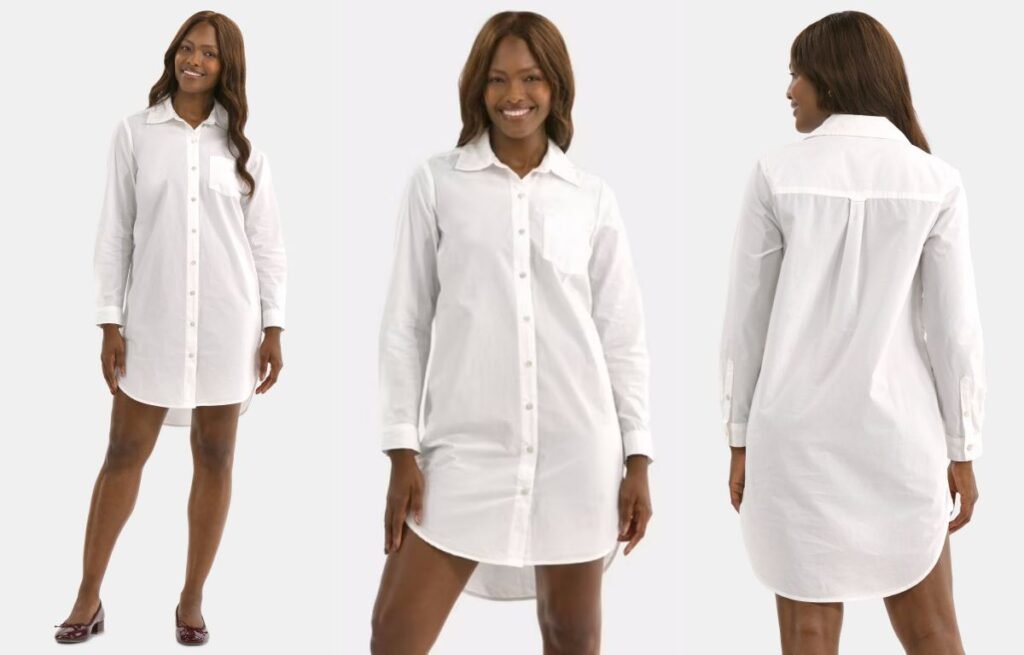
What Defines a Shirt Dress Top and Why Is It So Versatile?
A shirt dress top combines the crisp lines of a shirt with the coverage and comfort of a dress. I love how easy it is to dress up or down, depending on my mood or the day’s plans.
A shirt dress top features a collared neckline, button-down front, and shirt-style cuffs—plus a longer length that falls to the thigh or knee. It’s designed to be worn as a standalone mini-dress, a tunic over leggings, or an oversized top with pants.
The Origins and Everyday Power of the Shirt Dress Top
Shirt dress tops trace their roots to classic menswear shirts, but designers reinvented them for women in the 1950s. Now, you’ll see them in cotton, linen, denim, silk, or blends—tailored, belted, or relaxed. The adjustable fit and modest coverage make them a safe, stylish choice for any body type.
| Feature | Shirt Dress Top | Why It Matters |
|---|---|---|
| Length | Thigh to knee | Flexible styling |
| Construction | Shirt collar, cuffs, placket | Structured but comfortable |
| Versatility | Worn as top or dress | Multi-use, travel-friendly |
| Fit | Relaxed, belted, tailored | Suits all figures |
This top is a go-to for days when you need both style and ease.
How Does the Shirt Dress Top Compare to Regular Shirts and Dresses?
A lot of clients ask if the shirt dress top is just a long shirt or a short dress. It’s both, but with more styling potential than either on their own.
The shirt dress top has the smart structure of a classic shirt and the freedom of a dress. Unlike short shirts, it offers coverage and can be worn alone. Unlike fitted dresses, it’s more relaxed and easier to layer or adjust with belts and accessories.
Shirt Dress Top vs. Shirt vs. Dress
Shirt Dress Top
- Worn tucked, belted, or loose; as a mini-dress, tunic, or top.
- Great for layering with leggings, skinny jeans, or under sweaters.
Regular Shirt
- Shorter length, usually ends at the hip.
- Designed for tucking or wearing untucked with pants/skirts only.
Dress
- Can be more formal or fitted.
- Typically not meant for layering as a top.
| Style | Length | Styling Flexibility | Best For |
|---|---|---|---|
| Shirt Dress Top | Mid-thigh/knee | High—dress or top/tunic | Office, travel, play |
| Shirt | Hip or shorter | Low—only as top | Work, basic layering |
| Dress | Knee or longer | Low—worn solo | Events, work, casual |
The shirt dress top bridges workwear, casual, and even travel needs.
How Do Fabric Choices, Fit, and Details Shape the Shirt Dress Top?
The beauty of this style lies in the details. I always focus on fabric, fit, and trims to make sure each piece is flattering, comfortable, and unique.
Cotton and linen make shirt dress tops cool and breathable for warm weather. Silk and blends add luxury, while denim or poplin give more structure. Details like side slits, waist ties, pockets, and cuff shapes can all change the top’s look and function.
Construction Choices and Their Impact
Fabric
- Cotton poplin: Crisp, structured, ideal for work and classic looks.
- Linen: Breathable, relaxed, perfect for summer.
- Silk/satin: Soft, drapey, dressier for evenings or events.
- Denim/twill: Casual, holds shape, can double as a light jacket.
Fit & Details
- Relaxed: Boyfriend fit, easy to layer or wear loose.
- Tailored: Darted for shape, great for professional settings.
- Belted: Cinches waist for a defined silhouette.
- Side slits: Add movement and comfort.
- Pockets: Functional and stylish.
| Feature | Effect on Style | Best Use |
|---|---|---|
| Poplin/Linen | Crisp or breezy look | Office, summer |
| Silk/Blend | Elegant, fluid drape | Events, nights out |
| Denim/Twill | Durable, laid-back | Casual, travel, layering |
| Waist tie | Defines shape | All body types |
| Slits/Pockets | Adds movement, function | Everyday wear |
I always test for comfort and durability—shirt dress tops need to move with you.
How to Style Shirt Dress Tops for Work, Play, and All Seasons?
This style’s biggest strength is flexibility. I help clients style shirt dress tops for every part of their life—from office to weekend brunch to travel.
For work, wear a tailored shirt dress top with a belt and pointed flats. For weekends, leave it loose over leggings, or tuck it into jeans. For a night out, pick a silk version, add heels, and bold accessories. Layer under cardigans or jackets as weather changes.
Styling Scenarios
Work
- Classic cotton shirt dress top, belted at the waist.
- Buttoned up with a blazer or trench coat.
- Add loafers or pointed flats.
Casual/Weekend
- Relaxed fit shirt dress top over leggings or skinny jeans.
- Wear open as a lightweight jacket over a tank or tee.
- Pair with sneakers or sandals.
Events/Night
- Silk or satin shirt dress top, worn as a mini-dress with heels.
- Statement earrings or a bold clutch for extra impact.
Seasonal Layering
- Layer under a sweater vest or oversized knit in fall/winter.
- Roll up sleeves and add a straw hat in spring/summer.
| Occasion | Shirt Dress Top Style | Styling Tip |
|---|---|---|
| Work | Tailored, poplin | Belted, with blazer or trench |
| Weekend | Relaxed, linen/denim | Untucked, over leggings or jeans |
| Night Out | Silk/satin, fitted | As mini-dress, with bold jewelry |
| Layering | Any | Under knits, open as jacket |
This is a piece that’s always ready for anything—style it up or down in seconds.
Basic Shirt
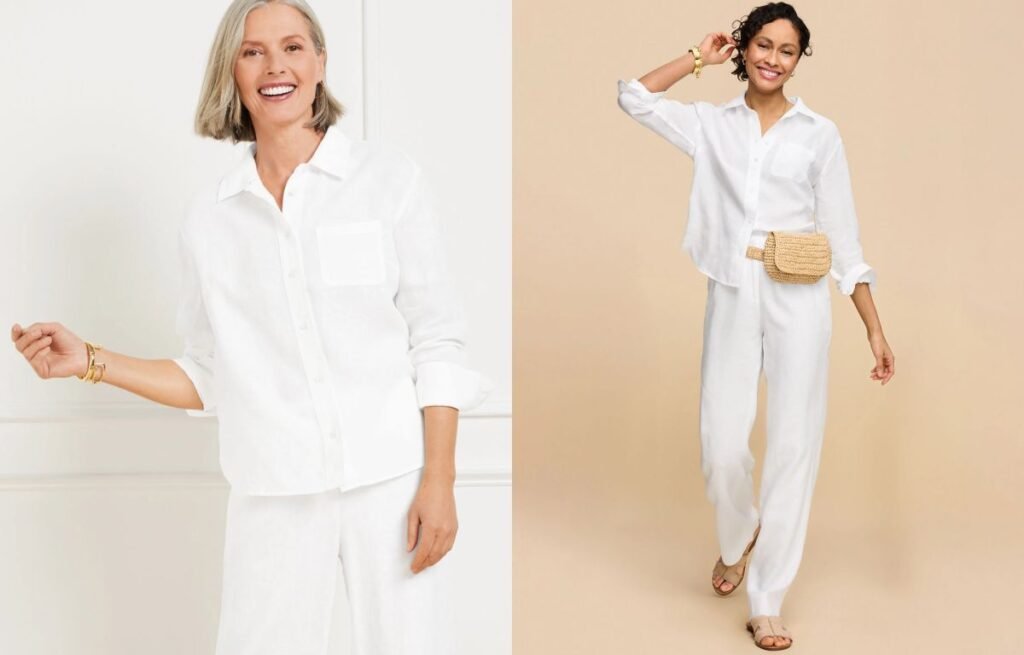
What Defines a Basic Shirt and Why Is It So Essential?
The beauty of the basic shirt is in its simplicity. No extra frills or trends—just a timeless silhouette that suits every age and body type.
A basic shirt features a button-down front, classic collar, and full-length sleeves. It’s usually designed with a straight or slightly shaped cut in solid colors like white, blue, or black. This simplicity makes it perfect for endless mixing and matching.
The Core Role of the Basic Shirt
The basic shirt traces back to menswear, but has long been adapted for women. It’s found in every professional wardrobe, often as part of a uniform, but also shines in off-duty and casual settings. The basic shirt can be worn tucked or untucked, open or buttoned, layered or solo—there’s no wrong way.
| Feature | Basic Shirt | Why It Matters |
|---|---|---|
| Collar | Classic or spread | Adds structure, frames face |
| Fabric | Cotton, blends, linen | Comfort, breathability |
| Color | Mostly neutrals | Versatile for all styles |
| Fit | Regular or slightly tailored | Flatters most shapes |
This is the one top that can take you from interview to after-hours, with just a change of accessories.
How Does the Basic Shirt Compare to Other Essential Tops?
Women often ask if a basic shirt is more useful than a tee, blouse, or knit. Each has a place, but the basic shirt stands out for polish and flexibility.
The basic shirt is dressier than a T-shirt, simpler than a blouse, and more structured than most knits. It’s easy to dress up or down, and works year-round. Unlike trendy tops, the basic shirt never looks dated.
Basic Shirt vs. Other Closet Essentials
Basic Shirt vs. T-Shirt
- Basic Shirt: Button-up, crisp, ideal for formal or semi-formal looks.
- T-shirt: Pullover, soft, relaxed, better for casual days.
Basic Shirt vs. Blouse
- Basic Shirt: Minimal details, easy to layer, always appropriate.
- Blouse: More feminine, can have ruffles, pleats, or special fabrics.
Basic Shirt vs. Knit Top
- Basic Shirt: Holds shape, best for tucking or layering.
- Knit: Stretchy, casual, best for comfort.
| Top Type | Structure | Versatility | Best Use |
|---|---|---|---|
| Basic Shirt | Crisp, tailored | Very high | Work, layering, events |
| T-shirt | Soft, relaxed | High | Casual, athleisure |
| Blouse | Flowy, detailed | Medium | Dressy, feminine looks |
| Knit | Stretchy, casual | Medium | Comfort, layering |
The basic shirt is the most “blank canvas” piece—ready to be styled for any mood.
How Do Fabric, Fit, and Color Choices Shape the Basic Shirt?
Not every basic shirt feels the same—fabric, fit, and color decide its comfort and style. I always select shirts with soft, durable fabrics and a clean cut for clients who want longevity and confidence.
Crisp cotton or blended poplin keeps the shape and is easy to care for. Linen is breathable for hot climates. Fit can be slim, relaxed, or even oversized for a trendier edge. While white is the classic, blue, black, and pale pastels are all popular.
Choosing the Perfect Basic Shirt
Fabric
- Cotton poplin: Structured, smooth, breathable, easy to iron.
- Blended cotton/poly: Less wrinkling, holds color.
- Linen: Light, natural, cool, with relaxed wrinkles.
Fit
- Slim: Professional, ideal for suits and tucking.
- Regular: Everyday, easy to layer.
- Oversized: Modern, comfortable, pairs well with skinny pants or shorts.
Color
- White: Most formal, universal.
- Blue: Soft, professional, classic.
- Black: Urban, slim, hides stains.
- Pastels: Feminine, seasonal, easy to pair.
| Choice | Best For | Styling Strength |
|---|---|---|
| Cotton | Year-round, work | Crisp, holds shape |
| Linen | Summer, travel | Cool, casual, airy |
| Oversized | Trendy, relaxed | Statement, comfort |
| Slim Fit | Office, layering | Neat, polished |
| Blue/White | All occasions | Maximum versatility |
Quality basics have sturdy seams, smooth buttons, and even stitching—details I always check.
How to Style the Basic Shirt for Work, Weekends, and Every Season?
The real power of the basic shirt is how it adapts. I love showing clients ways to style the same shirt for office, errands, or nights out.
For work, tuck a slim-fit basic shirt into tailored pants or a pencil skirt. For weekends, wear it loose over jeans or shorts. Layer under sweaters or jackets for extra warmth. Roll up the sleeves or tie at the waist for a modern twist.
Styling Scenarios
Work
- White or blue basic shirt, fully buttoned, with tailored trousers or skirt.
- Add a blazer for meetings; wear solo for casual days.
- Pearls or a silk scarf for polish.
Casual
- Oversized shirt over a tank and leggings, sleeves rolled.
- Half-tuck into boyfriend jeans or shorts.
- Pair with sneakers or sandals.
Evenings
- Black or pastel basic shirt, tucked into a leather skirt.
- Unbuttoned slightly, add layered necklaces or bold earrings.
All Seasons
- Layer under knits or vests in fall/winter.
- Use as a light jacket over tees in spring/summer.
| Occasion | Basic Shirt Style | Styling Tip |
|---|---|---|
| Work | Slim, crisp, neutral | Tucked, with blazer or sweater |
| Casual | Oversized, soft | Untucked, sleeves rolled, open |
| Evening | Black/pastel, fitted | Unbuttoned, with statement jewelry |
| Layering | Any | Under knits, over tanks, tied at waist |
This one shirt lets you dress up, down, or anywhere in between.
Sleeveless Shirt
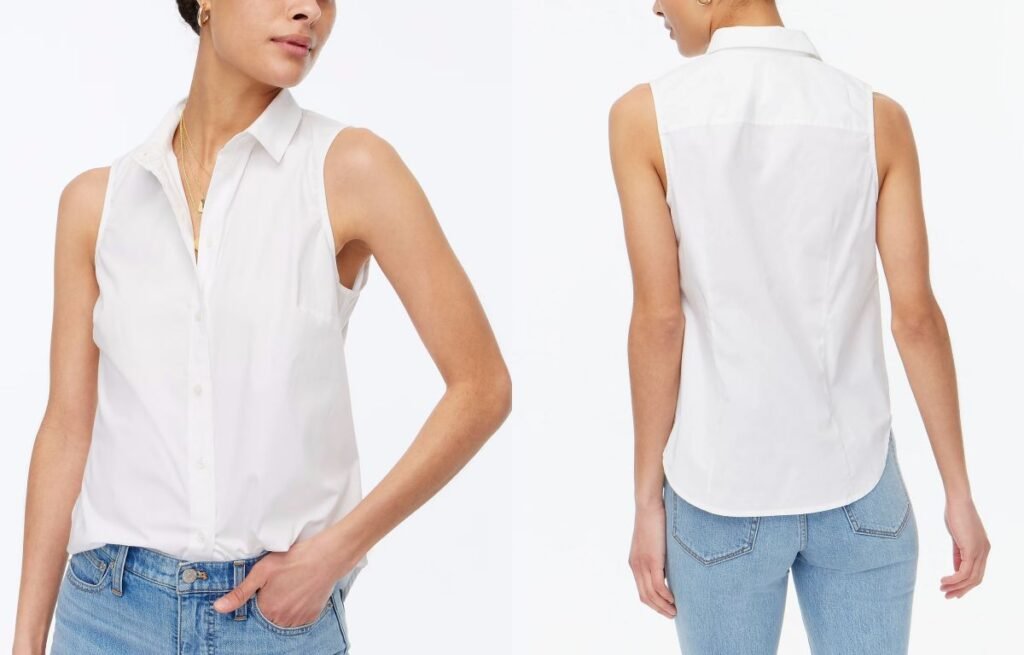
What Defines a Sleeveless Shirt and Why Is It So Popular?
A sleeveless shirt is all about freedom of movement and cool comfort. With no sleeves, it keeps you fresh and flatters the arms and shoulders.
A sleeveless shirt features a collar and button-down or pullover design, but without sleeves. Styles range from sharp and structured for work to soft and flowy for weekends. Its main draw is easy wear and endless layering potential.
The Rise and Endurance of Sleeveless Shirts
Sleeveless shirts first gained popularity in the 1960s as women’s dress codes relaxed. Now, you’ll find them everywhere—in cotton, linen, silk, or even stretch blends. From muscle shirts to elegant shell tops, there’s a style for every personality and need.
| Feature | Sleeveless Shirt | Why It Matters |
|---|---|---|
| No sleeves | Cooler, less bulk | Great for layering or heat |
| Shirt details | Collars, buttons, placket | Professional or casual option |
| Fabric options | Cotton, linen, silk | Fits any occasion or climate |
| Fit | Fitted, relaxed | Flatters all shapes |
No other top transitions so easily between seasons or dress codes.
How Does the Sleeveless Shirt Compare to Other Summer Tops?
Many women wonder if a sleeveless shirt is just a tank top or cami. The answer is: not even close. The structure of a sleeveless shirt gives it an edge.
Sleeveless shirts have collars and button plackets, giving them a smarter, more polished look than basic tanks. They’re dressier than T-shirts and more work-appropriate than camisoles, yet lighter and more freeing than standard shirts.
Sleeveless Shirt vs. Other Warm-weather Tops
Sleeveless Shirt
- Sharp collar and button-front.
- Versatile—easy to dress up or down.
- Looks finished, even with no layers.
Tank Top
- No collar, no buttons.
- Very casual, more like loungewear or sportswear.
Camisole
- Spaghetti straps, usually pullover style.
- Lightest and most feminine, but less structure.
Short-sleeve Shirt
- Partial arm coverage.
- Still structured, but not as cool as sleeveless.
| Top Type | Structure | Occasion | Style Level |
|---|---|---|---|
| Sleeveless Shirt | Structured | Work, travel | Polished, classic |
| Tank Top | None | Sports, casual | Relaxed, informal |
| Camisole | Minimal | Layering, sleep | Feminine, delicate |
| Short-sleeve | Some | Work, casual | Versatile, safe |
If you want style and comfort, the sleeveless shirt beats other options hands down.
How Do Fabrics, Cuts, and Design Details Shape the Sleeveless Shirt?
The look and feel of a sleeveless shirt depends on its fabric, cut, and extra features. I always pay attention to these details to make sure the shirt works for my clients’ needs.
Cotton and linen keep you cool, while silk or blends add softness and luxury. Fitted cuts are best for work or layering, while relaxed or boxy shapes give a breezy, weekend feel. Design details like pleats, pockets, or curved hems can elevate the style or make it more practical.
Sleeveless Shirt Construction
Fabrics
- Cotton poplin: Crisp, classic, easy care.
- Linen: Breathable, perfect for hot climates.
- Silk or viscose: Adds shine and drape for special occasions.
- Blends with stretch: More movement, keeps shape.
Fit & Cut
- Fitted: Tucks easily, layers under jackets or cardigans.
- Relaxed/boxy: Looks modern, pairs well with slim bottoms.
- Curved hems: Adds length and flatters the hips.
- Buttoned up or open: Worn as a vest or over a tank.
Details
- Collars: Pointed for classic, mandarin for modern.
- Pockets: Functional or just for style.
- Pleats or darts: Improve fit and shape.
- Decorative trims: Lace, embroidery, or contrast piping for interest.
| Feature | Best For | Style/Function |
|---|---|---|
| Cotton/linen | Summer, office, travel | Breathable, easy care |
| Silk/viscose | Events, layering | Luxe, fluid, dressy |
| Fitted cut | Work, smart-casual | Polished, layers easily |
| Relaxed cut | Weekends, warm days | Comfort, modern, breezy |
I always check that armholes are high enough for coverage, but roomy enough for comfort.
How to Style Sleeveless Shirts for Work, Weekends, and Travel?
The sleeveless shirt adapts to every scenario. I love showing clients how to dress it up or down with simple swaps.
For work, tuck a fitted sleeveless shirt into trousers or a pencil skirt and top with a blazer. For weekends, wear loose over denim shorts or leggings. For travel, layer it under cardigans or open over a tank for an easy, comfortable look.
Real-life Styling Tips
Work
- White or pastel sleeveless shirt with tailored pants or skirt.
- Layer under a suit jacket or summer cardigan.
- Minimalist jewelry for a clean, professional vibe.
Weekends
- Boxy linen sleeveless shirt over shorts or relaxed jeans.
- Leave untucked, add sneakers or sandals.
- Try a straw hat or canvas tote for summer days.
Travel
- Layered under a cardigan or lightweight sweater.
- Wear open over a tank or tee for easy temperature control.
- Pair with leggings or joggers for long flights.
Special Occasions
- Silk sleeveless shirt with wide-leg pants or a slip skirt.
- Add heels and a clutch for an evening out.
| Occasion | Sleeveless Shirt Style | Styling Tip |
|---|---|---|
| Work | Fitted, crisp, neutral | Tucked, layered, with blazer |
| Weekend | Relaxed, linen/cotton | Untucked, with shorts or jeans |
| Travel | Any, easy-care fabric | Layered, open or buttoned |
| Evening | Silk, tailored | With dressy bottoms, accessories |
It’s always easy to build an outfit around a great sleeveless shirt.
What are the popular top styles in Asia, the Middle East, or Latin America?
Whenever I help brands launch new lines, I always look at what is trending in different regions. This keeps my designs global and my collections fresh.
Popular tops in Asia include kurtis, cheongsams, and kimonos. In the Middle East, kaftans and abayas are common. Latin America favors huipils, embroidered blouses, and off-shoulder tops. Each style is shaped by local traditions and modern influences.
Regional Top Styles—A Closer Analysis
Asia
- India: The kurti is everywhere, from daily wear to festive looks. It’s versatile and often features embroidery or prints.
- China: The cheongsam, or qipao, shows off elegant tailoring. Modern versions have updated cuts, short sleeves, or bolder colors.
- Japan: Kimono-inspired tops mix traditional wide sleeves with modern fabrics and cuts. These tops work as jackets, cardigans, or statement blouses.
Middle East
- Kaftan: I see kaftans used for both daily comfort and luxury events. Embroidery and rich fabrics like silk or brocade make them stand out.
- Abaya: Though more like an outer garment, the abaya’s long and flowing lines inspire loose, modest tops worn worldwide.
Latin America
- Huipil: Hand-woven huipils showcase native patterns and vibrant colors. They are now popular even outside Mexico, often styled as loose tunics or trendy crop tops.
- Embroidered blouses: Bright floral embroidery and light fabrics help these tops stay cool in hot climates.
| Region | Classic Top | Modern Adaptation Example |
|---|---|---|
| Asia | Kurti, Cheongsam | Layered kurtis, sleeveless qipao |
| Middle East | Kaftan, Abaya | Kaftan shirts, abaya-inspired tunics |
| Latin America | Huipil, Embroidered | Off-shoulder huipil, festival blouses |
Fashion brands now use these regional styles to make their products stand out in crowded markets.
How do traditional tops like kurtis or cheongsams blend into modern fashion?
Sometimes my clients worry about looking too “old-fashioned.” But I always tell them—good design is timeless, and classic pieces can be updated in so many creative ways.
Traditional tops like kurtis and cheongsams blend into modern fashion by using new fabrics, shorter cuts, fresh patterns, and mixed styling. Designers keep traditional details but update the look for today’s lifestyle.
The Fusion of Old and New
The Modern Kurti
Kurti designers now play with lengths—cropped or above the knee—and pair them with jeans or shorts instead of leggings. I see brands mix cotton with rayon or use digital prints instead of hand-block printing. Some even add Western details like collars or buttons.
Cheongsam’s Comeback
The cheongsam is famous for its mandarin collar and fitted silhouette. Modern cheongsam tops come sleeveless, with bold prints, zippers, or relaxed fits. Some brands use stretch fabrics to make them more comfortable. Cheongsam-inspired t-shirts and crop tops appear in streetwear and festival collections.
Blending Traditional with Contemporary
Many designers keep the signature shapes but use unexpected colors or modern embellishments. Some pair these tops with denim, sneakers, or street-style accessories for a younger feel.
| Traditional Top | Classic Feature | Modern Twist | Styling Tips |
|---|---|---|---|
| Kurti | Embroidery, tunic shape | Cropped, digital prints, collars | With jeans, layered jackets |
| Cheongsam/Qipao | Mandarin collar, fitted | Sleeveless, zippers, bold colors | With shorts, as outerwear |
| Kaftan | Flowing silhouette | Mini length, sheer fabrics | As beachwear, with belts |
I believe this mix of tradition and innovation gives women more choices and keeps cultural heritage alive. I always encourage clients to experiment—wear a kurti with sneakers or a cheongsam top with wide-leg pants.
Conclusion
Unique and niche women’s tops, inspired by world cultures, offer both beauty and meaning. They connect us to traditions while letting us express modern style. By blending old and new, we keep fashion fresh and personal.


